SOMA is the first multiplatform title from Frictional Games (we’re reviewing the PC version), and it is a first person horror game as we’re accustomed to seeing from this studio. They’re known for having minimal to no combat, and sacrificing gameplay for story. There are substantial differences in the writing and story of every game by Frictional Games. Penumbra is a Lovecraft inspired existential tale, Amnesia is a simple psychological horror story, while SOMA is a different kind of philosophical, existential, and psychological experience.
This review contains spoilers for Penumbra, Amnesia: The Dark Descent, and SOMA itself. If you’ve never played any of these games then you will want to skip the writing analysis.
Introduction
Soma
noun
plural so-ma-ta | \ˈsō-mə-tə\ or somas
Definition of SOMA
1 : the body of an organism
2 : all of an organism except the germ cells
3 : CELL BODY
See also: somatic
Unsurprisingly the title of the game gives some hint about what it’s going to be about. It is a horror experience like no other.
The most well known game from Frictional Games is Amnesia: The Dark Descent, a first person PC exclusive horror game known mostly for lack of combat, and nowadays it is quite well known that Amnesia relies more on trickery – on the perception of danger – rather than actual danger to the player. Amnesia scared us primarily through its gameplay; dark, chilling atmosphere with limited light sources, and powerful enemies which you cannot battle by traditional means. It forever changed the face of video game history, with so many horror games since then being heavily inspired by it, including Outlast, Alien: Isolation, and most others. Amnesia is more original than these other horror games however, due to its more original atmosphere and better detailed levels, and because it doesn’t rely on cheap jump scares.
But Amnesia was more than just frightening atmosphere. It was more than just dark corridors and monsters, which separates it from most other horror games. It also provokes feelings of uneasiness, by putting the player in unthinkable situations. At one point, the player must inoculate himself/herself with a vaccine, but there was of course no vaccine readily available. Therefore, the player had to synthesize it, and the blood of a recently deceased was needed to perform the synthesis. Furthermore, Amnesia: The Dark Descent provides a detailed account of torture, without explicitly showing most of it, similar to how the murder scenes in the film Seven were not usually explicitly shown. But we can hear the torture through auditory flashbacks, making it more disturbing than what they were capable of rendering on the technology they had.
Amnesia portrays the protagonist and antagonist as victims of circumstance opposed to pure evil, and they are willing to do anything to either to save himself from his impending doom in the case of the protagonist, or to return to his extradimensional home in the case of the antagonist. What Amnesia does not contain is a level of depth that more psychological horror titles have, such as Amnesia: A Machine for Pigs (which we remind you was created by a different studio).
Rolling back the clock to 2007 and 2008, Frictional Games released an episodic horror game called Penumbra. It is a somewhat forgotten masterpiece; Amnesia received credit for reshaping the horror genre with its illusions of fear, but that gameplay formula stems from Penumbra which did not rely on illusions. So it was truly Penumbra that set the tone. But Penumbra is more special because it has that extra level of depth we mentioned, conveyed through its story which we rank as one of the greatest stories in video game history. While Amnesia: A Machine for Pigs is more psychological, Penumbra is more existential, being somewhat reminiscent of the writings of H.P. Lovecraft. The first episode, Overture, is mostly survival horror like Amnesia, but what makes it special are two characters: Red, a man who seems borderline insane, a man who befriends the protagonist and helps guide the player through the bunker and mine they are trapped in with the promise of answers which the player seeks. Red’s fate, revealed at the end of Overture, remains one of the most memorable story moments in video game history as he begs the player to put him out of his misery, a request which the player is forced to comply with. The player is then shown that Red was trapped in this mine for about thirty years, since the age of 14.
The other stand out character of Overture shows similar themes of desperation; an unnamed character trapped within the mine, forced to consume the local spiders to survive. Overture provides a detailed account of his life through journal entries, voice recordings, and level detail that shows us what he had to go through, demonstrating tremendous finesse in off-screen character development.
Penumbra really ramps up during its second episode, Penumbra: Black Plague. Throughout the game you are taunted and baited by Clarence, by far one of the greatest antagonists ever made in gaming. We mentioned how Amnesia makes the player feel very uneasy by placing a terrible burden and responsibility on the player; Penumbra does this even better. In Overture, the burden was having to put Red out of his misery. Throughout Black Plague, the protagonist is guided remotely by yet another person, Amabel Swanson. She’s friendly, not insane like Red, and promises both answers and possibly a cure for the plague. When the time comes to finally meet Amabel, Clarence exercises his power over the protagonist’s senses, making him perceive Amabel as one of the many hostile infected humans found throughout the game. The player is forced to kill the creature, only to discover it was Amabel all along. Clarence then remarks, “Come on Monkey, take a joke.” So, in Penumbra: Black Plague, the player kills the only friendly contact in the game, the only apparent chance of hope. It’s brilliant. Frictional Games really knows how to place a terrible, onerous responsibility on the player, in order to make their games powerful and involving.
Black Plague culminates at the end with the heart stopping encounter with Tuurngait, an ancient being of otherworldly nature and unthinkable power, something straight out of a Lovecraft story. This “Tuurngait” and the messages it brings are what make Penumbra an outstanding existential horror story.
Where does that leave their latest game, SOMA? We are glad to say that SOMA takes a different route. Variety is the spice of life after all.
In addition to the name “SOMA,” Frictional Games gave us more hints about what the game is about via quoted philosophical musings such as the one below.
“You are certain that you have a subjective experience. There is no doubt that you are a conscious being. But how can you know for sure that others are?
Is there anything another person can do to truly convince you that they are conscious too, or is there no way of being absolutely sure?”
Cogito ergo sum. I think, therefore I am. But what if someone tells you this, someone—something which appears to be a mass of machinery with no visible organic body?
SOMA had one of the most interesting marketing campaigns for any game. They released numerous video clips such as the ones above, each one chilling and giving us a glimpse of what the game is about. They advertise not the gameplay contrary to Amnesia, but story themes. While waiting for SOMA’s release I didn’t anticipate the gameplay much for I knew what to expect from their previous games. I wholeheartedly anticipated the story.
What is consciousness? Is there a soul? Where does life begin? What is life? How can we be sure that those all around us are living, thinking beings? Or are they just imitations of life, are they figments of our imagination? These are some of the questions one should think about before and while playing SOMA. Haunted castles can be scary, but SOMA pursues a different level of terror, a deeper one, by making us question the foundation of what we know or rather what we think we know. I think therefore I am, but how can I be sure that’s true for everyone else?
Looking at the second video posted above, we have an interesting conversation between two beings who claim to be the same person; one is apparently human, one apparently a piece of scattered machinery. Both are absolutely convinced the other is a fake. But how does that machine version perceive the other? How does it perceive the world? Clearly it perceives itself as a human being with its own body. This is very much like SCP 1193 now that I think about it.
Equally interesting is the YouTube series from Frictional Games that followed the release of SOMA, serving to show us a bit about Pathos-II before SOMA takes place. It does a great job setting the tone and giving us a glimpse of some of the characters that appear in the game. You can find it here.
Closer Look
Spoilers for SOMA begin here.
Despite being known as a Sci-Fi title, you may be surprised to discover that SOMA starts in 2015.
An illustrated introduction starts us off, similar to what Frictional Games did with Penumbra. It is revealed that the protagonist, Simon Jarrett, suffered permanent brain damage during an automobile accident. His girlfriend who was in the passenger seat was killed. Simon’s brain damage causes occasional cranial bleeding, and he also suffers from nightmares. It is a critical condition and he was given a specific timeline of how long he has to live.
To extend his life, Simon reached out to several doctors and volunteered to undergo experimental treatment. This is where the game begins. It starts in Simon’s apartment, which the player is allowed to explore. An early hint of the kind of world interaction and detail we’d see throughout the game. The higher production value of SOMA compared to Amnesia and Penumbra is immediately apparent in the more detailed levels and voiced protagonist, and the relative abundance of character interaction. Thus much more voice acting is present here, since the player is mostly alone throughout Amnesia and Penumbra. SOMA has much more interaction than the previous games, and in many different forms. Not that Penumbra and Amnesia screamed low budget; Frictional Games has to be one of the most efficient developing studios out there, if not the most, by making such polished and excellent games with such a low budget. Indeed, SOMA is far more polished and has a bigger budget, but it definitely did not have a massive budget itself, being an indie game that wasn’t crowdfunded.
It was amusing when, after taking a subway down to the laboratories for an appointment, I arrived at an apparently abandoned building where I was supposed to receive a brain scan. It reminded me of those back alley clinics we see on television. But it is explained; the building/lab is owned by Pace Laboratories and is being rented to perform Simon’s brain scan. Simon chose to participate in research that seemed mutually beneficial; he’d receive unique, promising treatment while they get to research the effectiveness of their work in progress treatment. Simon acknowledges that he’s a sort of lab rat. The treatment does not seem dangerous; the doctors (Dr. Munshi in particular) were just going to scan Simon’s brain, upload their scan to a computer where they’d analyze it and develop treatment for Simon’s unique condition. It sounds very promising indeed. But of course, things go wrong. Simon sits down for the brain scan, it all seems normal, but then he blacks out and wakes up somewhere else entirely.
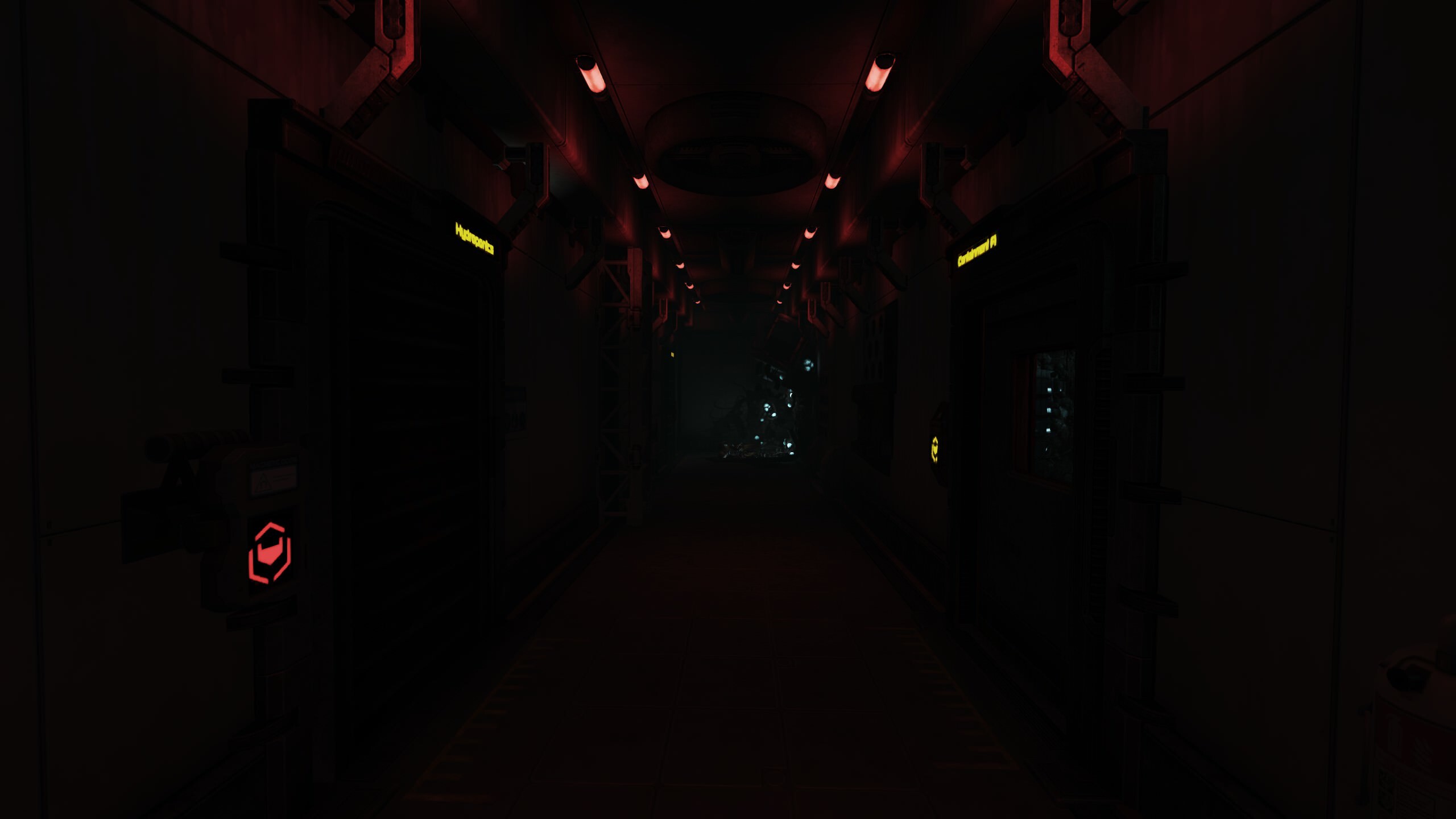
Simon awakes in this creepy sci-fi nightmare, which is revealed to be a series of underwater facilities belonging to “Carthage Industries,” all under the name “Pathos-II” which of course comes from the Greek word meaning suffering or experience. It is also revealed that the year is now 2104, so almost a century later.
The game really takes off here. What happened? How did you get there? And as you keep playing you will ask, “What has become of Simon? What is he? What has become of the world?” Throughout the game you will encounter machines, robots that believe they’re human. They are entirely convinced they’re human, just like Simon is. In fact, you will even come across the dead human bodies of these robots, and many of these robots are unaware that the person they’re claiming to be has died. But in Simon’s mind, they’re clearly just crazy robots. But what about Simon, who seemingly teleported to 2104? What about the strange, inexplicable things that happen with Simon, such as his ability to communicate with machinery and “listen to” memories? Or when, upon being submerged in water, his body changes and all of a sudden he seems to be wearing a diving suit? Or when hostile machines approach him, and his vision distorts like a video feed receiving interference? Needless to say, Simon’s nature is as questionable as everyone else’s.
Your goal essentially is to navigate through these facilities, eventually with the guidance of Catherine Chun, someone who works at Pathos-II, who guides you through radio contact. You must find out what this place is and what happened to you. It is a dangerous path, with enemy encounters being reminiscent to those in Penumbra and Amnesia. Most of the enemies don’t disappear like Penumbra and unlike Amnesia: The Dark Descent, raising tension. You can’t just ride out enemy encounters like you can in Amnesia. There is a large variety of enemies, more than Amnesia and Penumbra. Some talk although they don’t appear to make sense, unlike some of the other robot-people you will encounter who seem to be entirely normal people albeit in a robotic body.
About hostile creatures: Penumbra: Overture has mutated dogs, mutated spiders, and a giant mutated worm. Penumbra: Black Plague has only “infected” humans which all behave identically. Penumbra: Requiem has no enemy encounters. Amnesia: The Dark Descent has “water lurkers,” as well as two different humanoid enemies, for a total of three enemy types. Amnesia: A Machine for Pigs has pig-humanoid creatures and one special encounter. SOMA has many different kinds of enemies. Almost every hostile being you find in SOMA is unique; a completely different creature with completely different AI programming. Aside from the first enemy type shown, and one purposely awkward under water enemy, SOMA’s hostile creatures are far more terrifying than those in Amnesia and Penumbra. They are far more unpredictable; of all horror games I’ve played (which is essentially every horror game anybody has heard of and much more) SOMA has the least predictable AI. Combined with their terrifying, unpredictable sounds that sometimes sound like cries for help (adding confusion to the mix of emotions you’ll feel), SOMA without a doubt has the scariest hostile encounters along with Underhell’s house. The fact that SOMA’s enemies are not just evil monsters like those in Amnesia; the fact that they’re confused, even scared, make them far more intense.
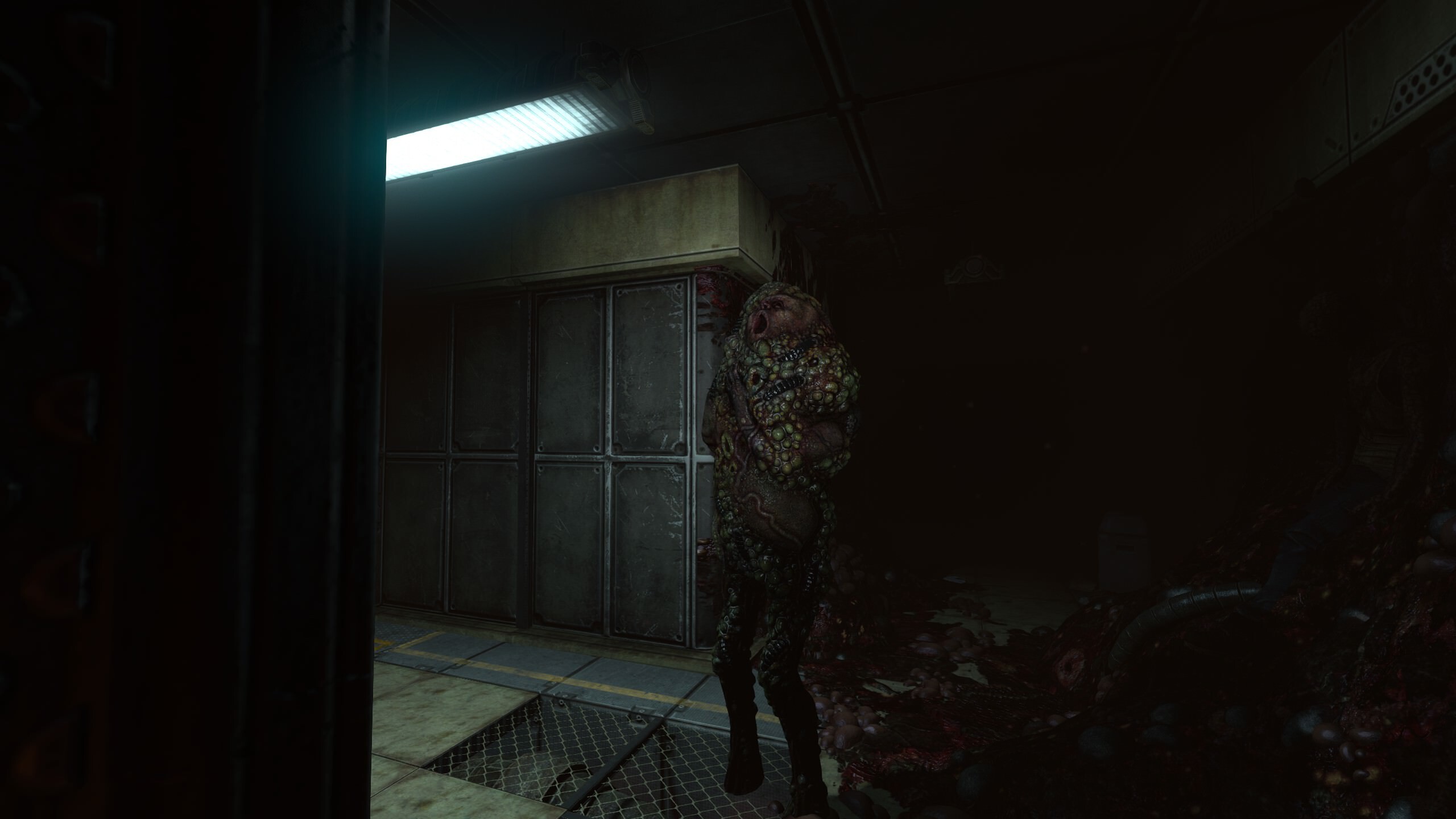
They don’t all look mechanical…
One enemy in particular is far more dangerous than the others, more than any other enemy Frictional Games has created. This enemy will terrify just about any gamer. It creates disturbing screen effects and sound effects which amplify significantly when looking at it, especially when the distance between it and the player is minimal. Its senses work in a strange way. It does have hearing and sight, but if you see it then it sees you to some degree. It teleports and appears out of nowhere, similar to the stalking enemy in Resident Evil 3.5.
It is with this enemy and several others that Frictional Games included the apparently controversial “retry system.” If one of these creatures catches you, you don’t just die like with the others. Instead the protagonist blacks out and reawakens greatly weakened. This keeps the game from getting frustrating. A teleporting enemy with deadly sharp senses, that’s extremely difficult to sneak around, that kills the player instantly, that can’t be combated? Yeah, the retry system is necessary for balance and to avoid frustration. It also makes sense within the plot. Also note that there is at least one scripted chase sequence with this type of enemy (chase sequences like those in their previous games), and during these the retry system is not present. A wise decision since these are simple straightforward scripted chases, so the player doesn’t deserve an easy pass for failing.
Another enemy which has this retry system implemented around is one that resembles Left 4 Dead’s witch. Had the system not been implemented I’d be docking points for the game being too frustrating and unbalanced.
During your journey, you will be contacted by Catherine Chun who we mentioned earlier. She works (worked?) at Pathos-II. She contacts you electronically and guides you to her, promising answers. If you’ve played Penumbra this will sound familiar; a similar dynamic was used in Penumbra: Black Plague with a character named Amabel Swanson, although this one goes much deeper as Catherine and Simon both become full fledged, well developed characters. But this similarity will cause extreme tension for players who have played Penumbra, especially when you finally reach Catherine’s position.
If you’ve already watched the YouTube series then you’ll see that Catherine had a mixed reputation, although Transmission #4 definitely portrays her as cold. She seemed to care more about her pet project, which we’ll talk about later, than people. She isn’t quite as cold in the game, but her project is still obviously her first concern. However, she is far from a one dimensional character, and at times she does seem to care. Her project itself can be proof of her care for others. She seems to have almost given up on social interaction, so instead she cares in a different way—through her project.
Navigating throughout the facilities is an atmospheric experience thanks to the detail and all of the unique object interaction. Some games involve interacting with the same few types of objects throughout, which gets repetitive. But SOMA allows the player to use all sorts of things; different kinds of computers offering different functionalities, shuttles for transportation, and much more.
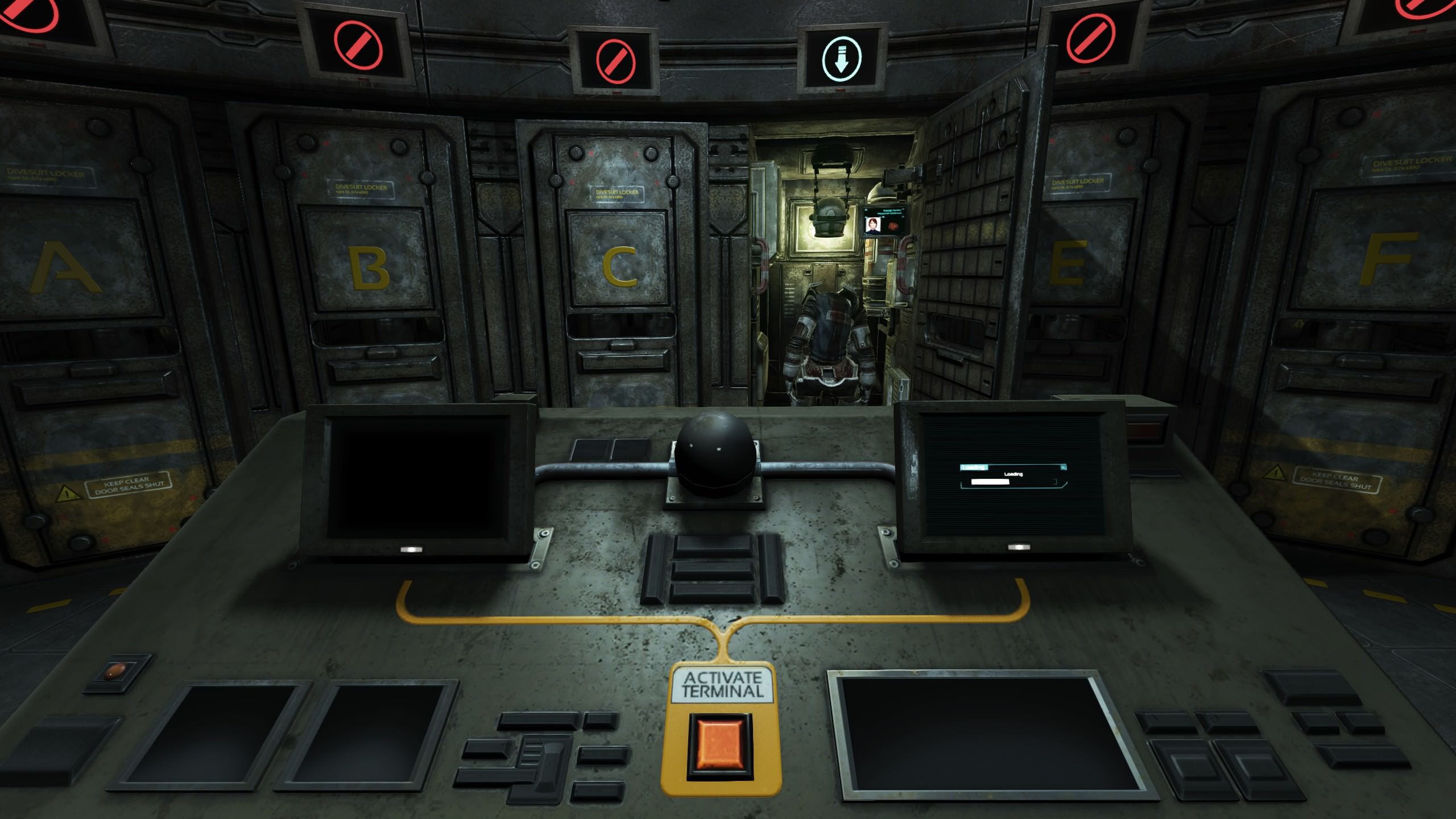
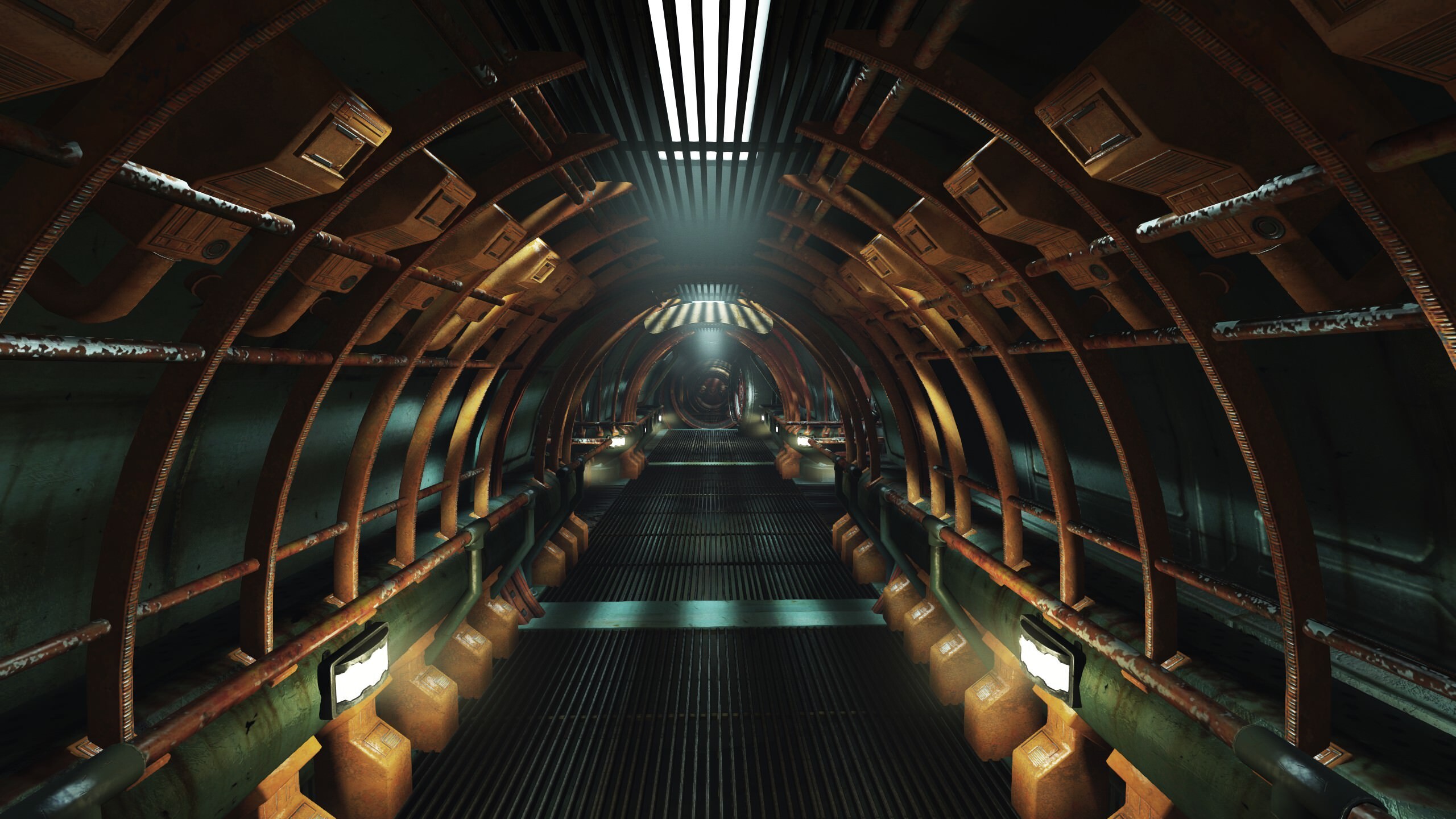
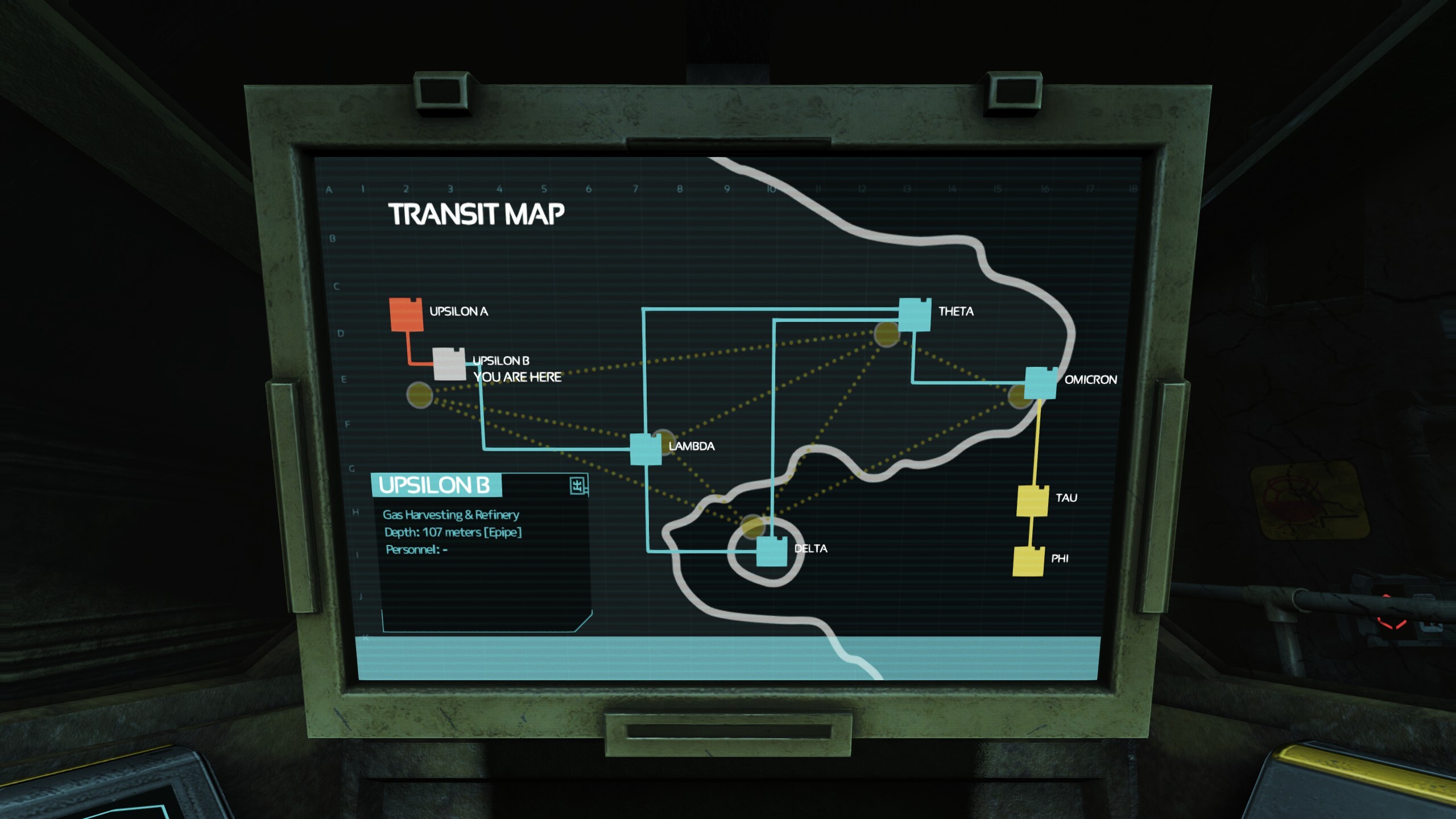
You will also be spending lots of times submerged under water as well, both indoors and out in the ocean.



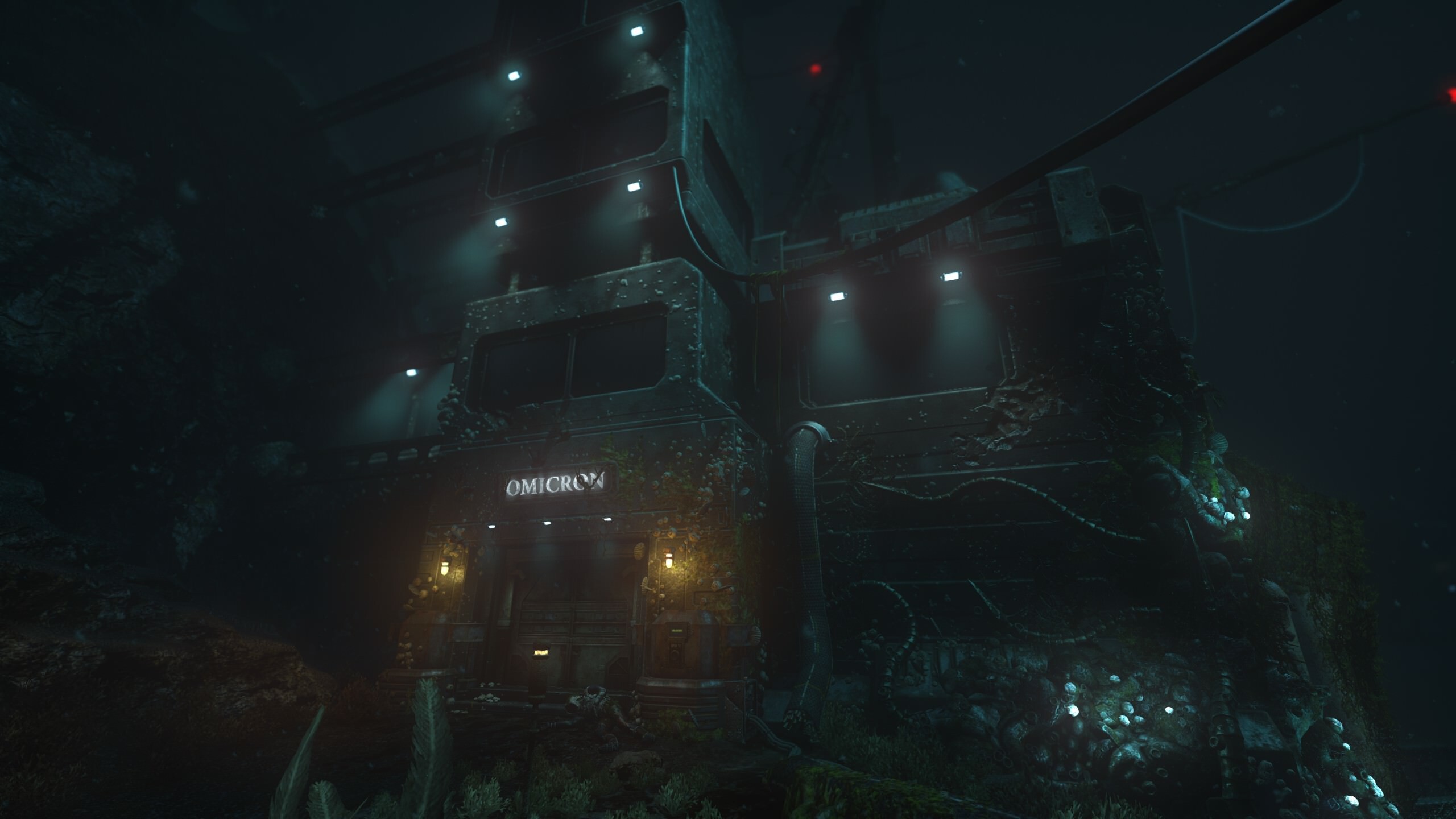
Eventually it is discovered that in this futuristic world, Earth’s surface had become barren and uninhabitable due to a massive comet collision. This brings up the plot question of, “what has become of the world?” This can serve as extra motivation to push through the game, as if there wasn’t enough already.
Unlike Penumbra’s Amabel Swanson, the player actually does successfully reach Catherine. Her form may come as no surprise given the atmosphere of the game. She does indeed provide answers. She is in robot form like everyone else so far, and she confirms that Simon is indeed a robot as well. But you can doubt her all you want, just like some of the robots you encounter doubt Simon when Simon tells them they’re robots opposed to humans. Also like the others and like Simon, Catherine was once human. Now just imagine seemingly dozing off for a moment and waking up almost a century later in a new synthetic body, to put yourself in Simon’s shoes.
This also explains the aforementioned “retry” system with certain enemies. They don’t kill Simon, they just damage him. The enemies aren’t simple bloodthirsty creatures after all, and I can imagine that Simon is difficult to “kill” as he is in an advanced robotic body.
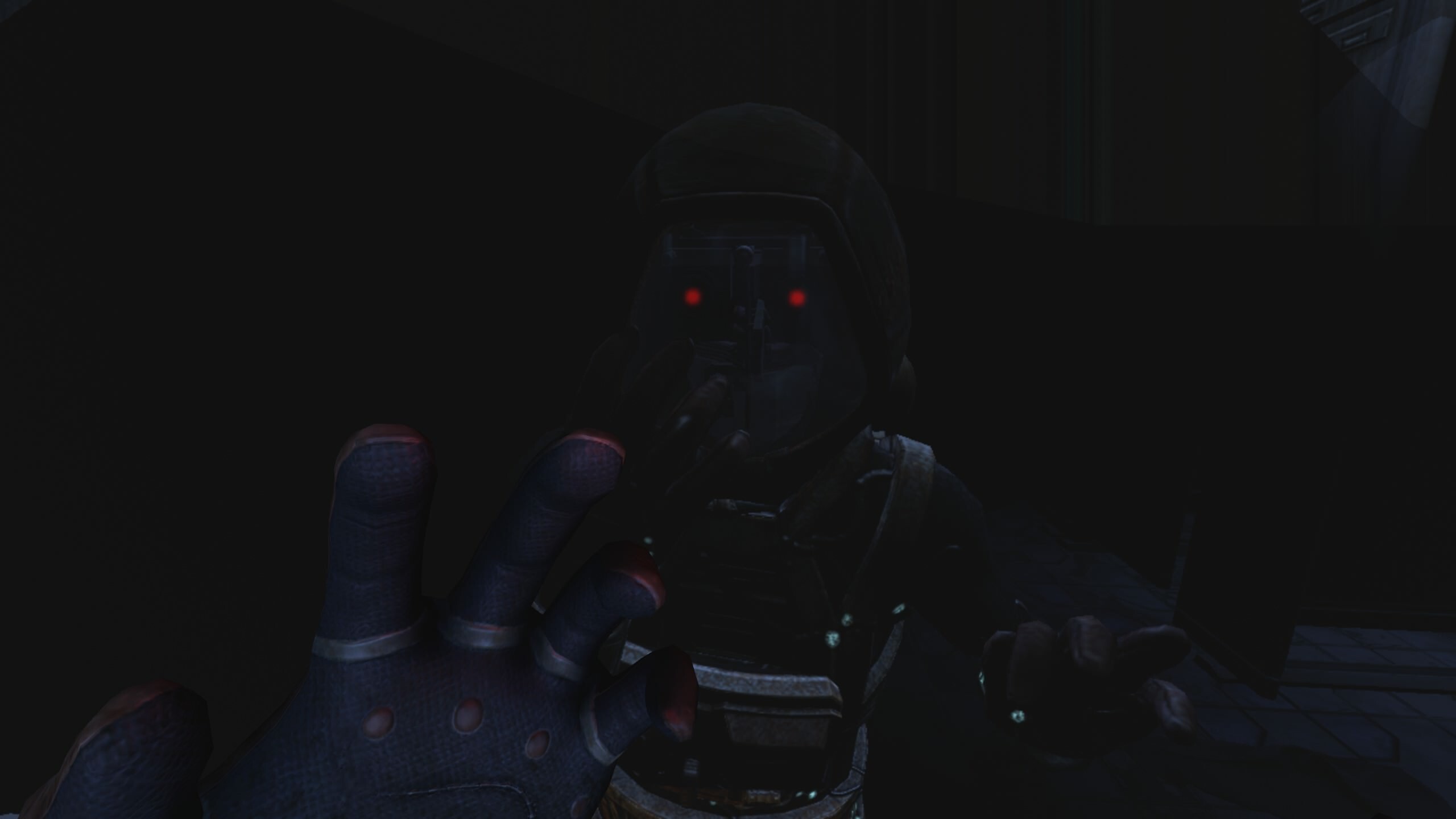
This is Simon as he appears throughout most of the game.
Catherine reveals a project she worked on in her human form; the Ark project. The goal of this project was to upload everyone’s mind into a collective, virtual world, similar to The Matrix. This world and all of its inhabitants was to be launched into orbit in outer space. Why would we create such a thing? To survive past our bodies’ natural capabilities? To live in a paradise better than the world we live in now? Needless to say, this project became everyone’s main focus once the aforementioned comet collision occurred, making Earth’s surface barren and endangering the human species. We are given glimpses of this virtual world, and we are shown the controversy it creates through logs and glimpses of characters discussing the Ark (which can be seen in the YouTube series), and also through surveys the player can take about the Ark. These survey questions really dig deep. What does it mean to be human? Is such a “life” within the Ark project truly a life? If so, is it worth living? Is Simon somehow within this world throughout the game, and if so then why is it in such a chaotic state? Now the game begins to examine transhumanism, transcending mortal life, which also brings forth extremely controversial religious subjects like the idea of heaven.
A question this raises is, why launch it into space? Simon asks this. Some dialogue in the game suggests it is because of concern for longevity of the planet, given its current state.
Catherine tried to scan as many Pathos-II workers into the Ark as possible, and she did scan many. Transmission #5 in the YouTube series, along with in-game notes, explain that there are side effects to the scans.
Simon uploads Catherine into his omni-tool, so that he can make continuous contact with her by plugging her into a computer device. She has to be plugged into a computer device to function, so she does not resemble Clarence from Penumbra as one might initially think. In some sections the player has to leave her plugged into a computer device while she converses with and guides the player through nearby loudspeakers. Simon and Catherine team up to launch the Ark project, since Earth is doomed. The dynamic between the two characters helps drive the game forward, and it is handled very well.
Catherine also explains the strange fleshy organic material that seems to cover parts of the facility, that feeds off power/electricity and also human life, that seeks to imitate life. This material can be seen on several of the enemies in the game, and it can be found attached to dying people, keeping them alive.
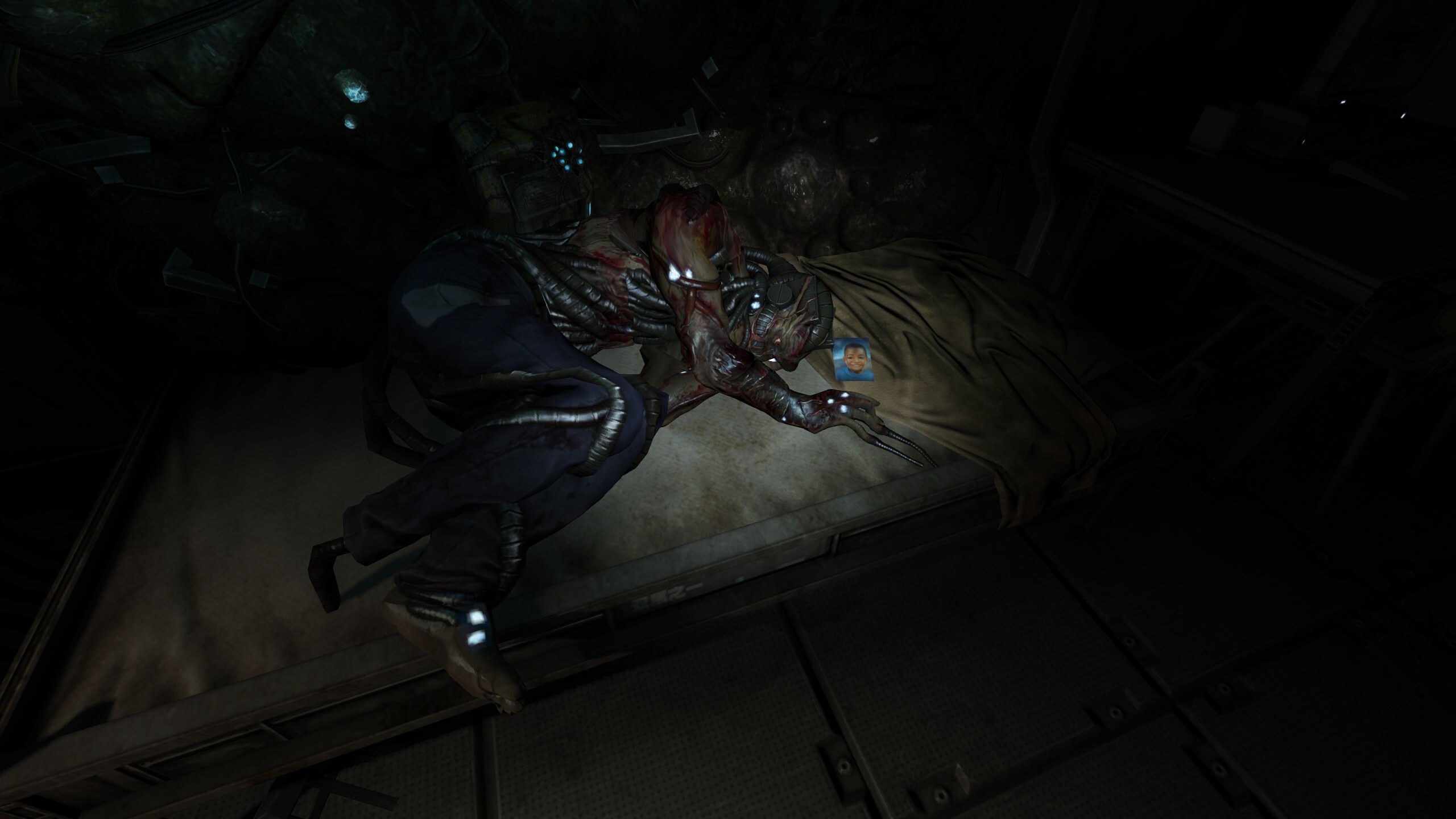
“It won’t let us die.”
It is revealed to be the result of a supposedly malfunctioning AI called WAU, and it acts in a cancerous way (the fleshy organic material is the “cancer”). Also, the “Vivarium” video shown before the game launched (and listed in the Introduction page) is the result of the WAU. It is mentioned in the game. The same for the “Mockingbird” video. The WAU was installed as a part of Pathos-II, designed to preserve life after the comet collision that ravaged Earth, and also to monitor and control Pathos-II. It was the first to successfully clone humans with very advanced brain scans, and Catherine was able to improve upon her own Ark design using similar methods. Therefore, it is said that the WAU copies and Catherine’s scans that are uploaded into the Ark are direct copies of people. They are effectively human. Catherine believes this, and so did many at Pathos-II, although time and again Simon is reluctant to accept this point of view. SOMA leaves it up to the player to choose their own point of view. The WAU remains an anticipated mystery for much of the game, and it attempts to halt your progress.
So the WAU seemingly went rogue, but it does believe that it is doing its job. Just like the robots in I, Robot thought they were doing their duty. The WAU created all of the enemies seen within the game, so it would appear the WAU has a… unique view of what life is. Then again, it also created Simon. Or rather, brought Simon back from the dead.
The WAU uses Pathos-II structure gel to infect living beings where it acts as a cancer, growing the fleshy material we mentioned earlier. It can revive deceased organisms which is seen in Transmission #6. Structure gel is used as a bridge between organic tissue and computerized equipment. This explains why enemies look the way they do.
WAU’s interference is what tore Pathos-II apart. This can be seen in the YouTube series, and the player learns of the inner conflict at Pathos-II through all sorts of diaries and logs.
Simon’s fate (in his human form) is also discovered along with recordings of his final moments. Following his initial brain scan in 2015, special treatment was administered but it was a failure, much to the dismay of Dr. Munshi. Simon expired more or less when he was expected to due to his brain damage, which is shortly after his brain scan. He reveals that in his final days he never appreciated life so much. So the reason he was born again into a synthetic body is because his brain scan, along with Dr. Munshi’s as well a several other’s, were some of the original “legacy” brain scans used as models for the scans performed at Pathos-II. Somehow, some way, Simon’s scan just happened to make it into a robot platform. The WAU is the reason for this, just like it created all of the hostile creatures and most of the robots. The question is why? And, once again, it’s because the WAU was programmed to preserve life. That’s precisely what it is doing.
It is also discovered that Simon isn’t just a robot; his body consists of the remnants of a Doctor who worked at Pathos-II, Imogen Reed, who is prominent in the webisodes. Simon is not just a robot, but like some of the enemies a mix of organic tissue and synthetic components. But unlike such enemies, Simon is not insane. Perhaps he is closer to perfection? Catherine seems to think so.
The reason Simon is able to read memories from dead bodies is also explained. We know that he can read data buffers since he’s (part) robot, and we learn that Pathos-II workers were fitted with a sort of “Black box” that monitored and regulated body functions. Simon reads information from these black boxes.
Later on in the game, it is revealed that some Pathos-II workers killed themselves after being scanned into the Ark. So, as expected, some people went fanatical of the idea of a real, tangible heaven, albeit a virtual one. One character named Robin Bass (also in robot form of course) talks about her experience dying and longing for the Ark. To her, it’s truly like going to heaven. The suicides of course sparked all kinds of controversy at Pathos-II with Catherine receiving much of the blame.

Living quarters of Robin Bass. It’s self-explanatory what happened here.
A character named Mark Sarang, a scientist working at Pathos-II, also talks about why he decided to kill himself after being scanned into the Ark. He points that the human body has trillions of cells which constantly die, yet we remain ourselves despite this cell death. Therefore, our mind, our self, is separate from our body, he says. We can go on living without our body, thanks to the Ark. This is also how the name SOMA came to be.
There also seemed to be betrayal among Pathos-II members. Sarang and others were contacted by Carthage Industries supervisory staff to study the WAU, and eliminate opposition through any means necessary. This is very reminiscent to the androids in Alien and Aliens, and also HAL in 2001: A Space Odyssey, in which a crew member is given secretive orders to study something and eliminate other crew members if needed.
SOMA features impressive character development all around, even for characters developed off screen. Every significant Pathos-II worker is made into a character to some degree, opposed to just something to drive the plot forward.
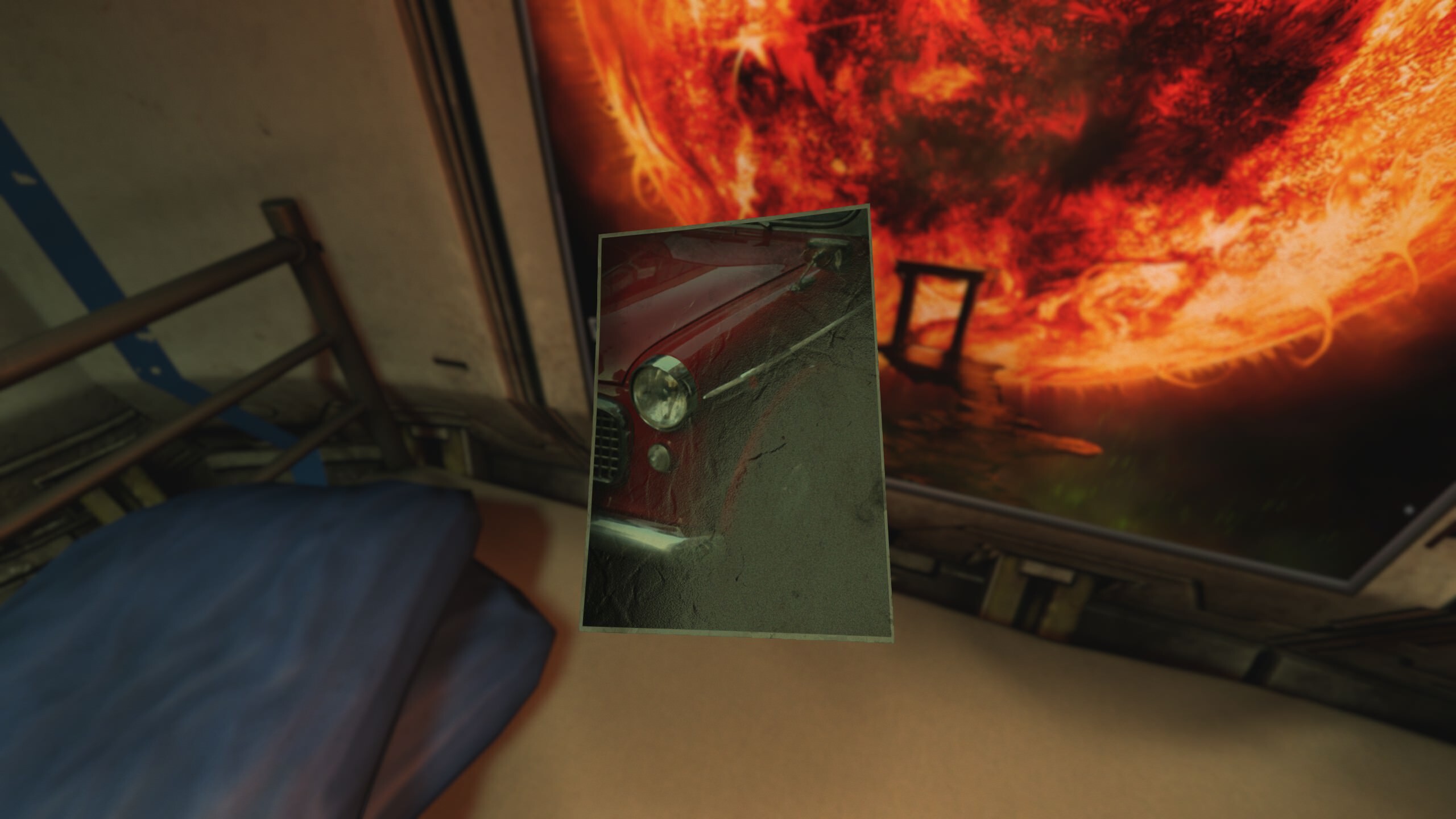
One motif in this game is memories, whether it’s from the photographs you can examine belonging to various Pathos-II members, or the memories you extract from data buffers. This motif is also present in Blade Runner, in which memories are suggested to make us human. These simulations of life, these robots, hold their memories dear as well.
Whereas Penumbra and Amnesia have moments of brilliant uneasiness, the entirety of SOMA shows it due to the thematic material. But even then, several particularly brilliant scenes highlight it more than all others. At one point in the game, in order to advance, Simon and Catherine must discover cipher codes to override a security system that’s halting their progress. But these codes aren’t just lying around, and only select few people knew them. So, in order to get the cipher codes, they must get the information from someone who knows them. But of course, no such person is around. The solution? Run a simulation—bring the person back to life in a virtual world, like the Ark, like Vivarium. But it has to be convincing, so the player must upload “scene information” to an external device, such as a Beach scene, Ski Lodge scene, etc. Then, the player must find the scan of one of the people who knew the cipher codes. With all of this in hand, the player may load the person and scene in a special computer simulation, effectively creating a life.
But that’s not enough. Brandon, the man being run in the simulation, is not convinced that any of it is real, despite which scene is used. When he panics due to the crude imitation in front of him, Catherine shuts down the simulation, effectively killing the man. By this point we’ve been shown enough to think that these simulations, these copies, are effectively real people (but you may dispute this for it is an ambiguous game). The moral ambiguity throughout the game, such as in this scene in particular, is some of the best there is in gaming. Perhaps the very best? What even compares? Definitely not The Witcher games. Not even Planescape: Torment.
This whole situation goes even further. The only way to advance is to obtain the cipher codes from Brandon. So the player must convince him that the simulation is real. To do so, the player must enter his living quarters, which like all the others shown are extremely detailed and showcase the unique personality and life of the person who lived there, and get to know Brandon. A love interest is discovered, as well as a way for Catherine to imitate her appearance and voice. With this information, the player must re-run the simulation in the correct scene (the one that seems most real), with Catherine imitating Alice, Brandon’s love interest. Unbelievably cruel. As a side note, I wonder if the name “Alice” is a reference to the Java-based SDK software? It has to be.
The information is then coerced out of Brandon before pulling the plug on his (simulated?) life. So not only do we have cruel manipulation of a life, we’re arguably playing with a life, playing God. Every simulation run is a new life created and destroyed, unless you choose to believe these copies and simulations aren’t equal to life. But all of this and the way it’s handled is perfect and brilliant.
Here is more food for thought. If Catherine is able to imitate Alice in the simulation, then how can you believe anything you’re seeing as Simon is real? What if Catherine is just a lie herself? By now you know you’re a robot, but how can you be sure Earth really is in this chaotic state? What if this is the Ark, or what if you’re inside one of the WAU’s simulations? And of course, given the nature of the material, it can be applied to the real world and our own life experiences, much like The Matrix. Admittedly, while these thoughts poured into my mind immediately after the Brandon simulation (all of that was written in my notes right after first experiencing it), the game doesn’t play off these questions at the end. The idea of all of this being a simulation and such is flirted with during the Brandon simulation, but never actually suggested beyond that. And this is a good thing. A really, really good thing. It avoids a stupid overused trope.
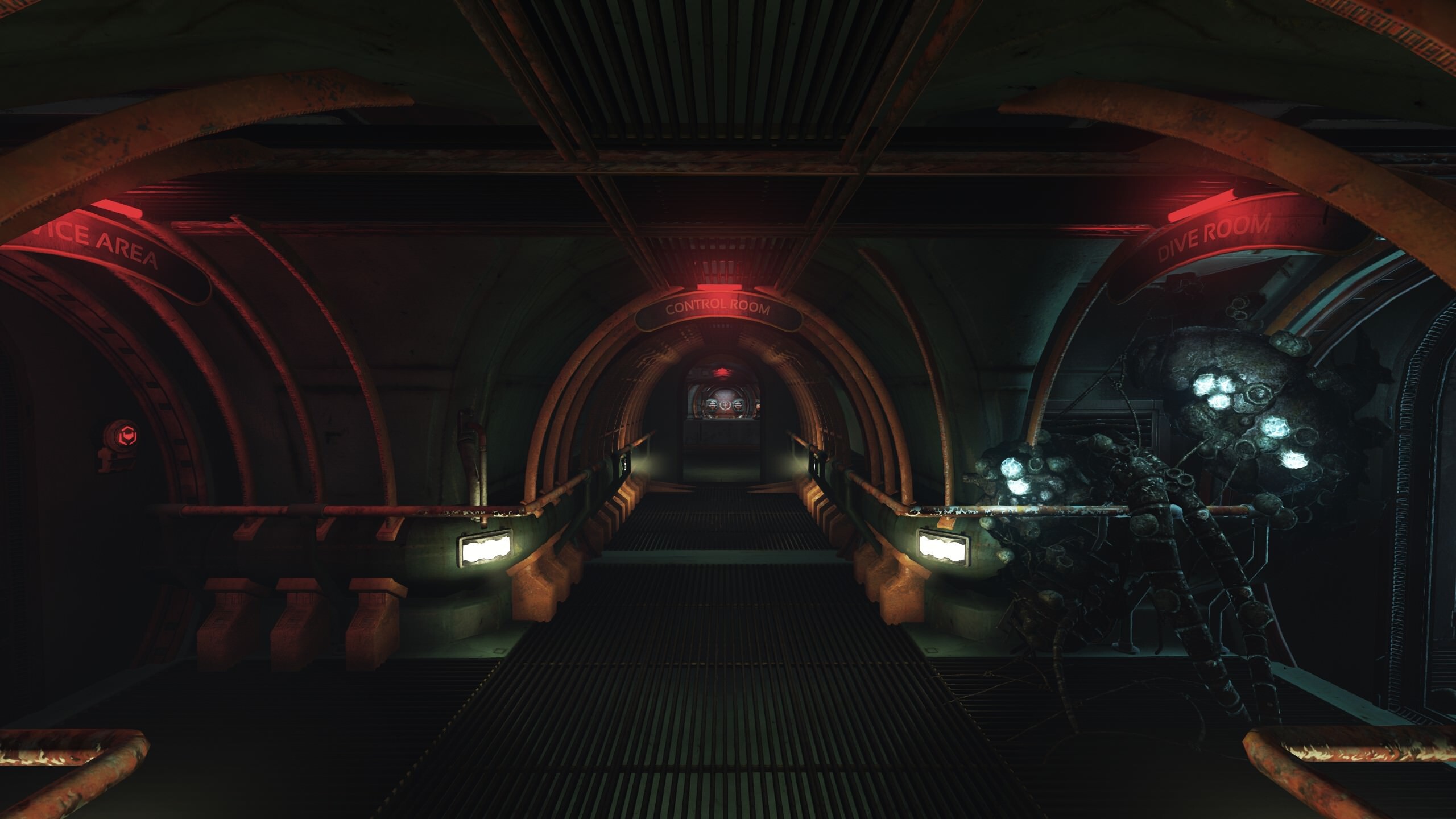
In addition to the Brandon simulation, another particularly powerful scene is when Simon has to be transferred to another body in order to advance the game. Not only does this require a new suit with a dead body still inside, but things don’t go as expected. Catherine, being as indifferent as she is, neglects to mention that after the transfer, the previous Simon is still alive. “There can’t be two Simons!” Simon shouts upon realizing this. The previous Simon is currently “disabled” but would come back to life after a short while, waking up just like Simon did early in the game. Lots of dialogue ensues and then the player is given the option of “killing” the other Simon. Again, this brings up the questions of what is consciousness and what makes a life. What does it mean to kill the previous Simon? Is it murder? But then again it’s your life, so your choice… right? Wrong? Who can say?
This is SOMA’s forte as a story driven video game; putting a heavy sense of responsibility on the player, which turns to dread because you have to do terrible things due to the circumstances in the plot. Again, this is a key storytelling technique for Frictional Games, dating back to their very first game and manifesting in every single one of their games, but SOMA has more of it and does a better job than all the rest. It is a storytelling technique unique to games, and extraordinarily powerful if done right. SOMA is one of very few games to do it right, and of all video games ever released, it showcases the most effective use of this technique.
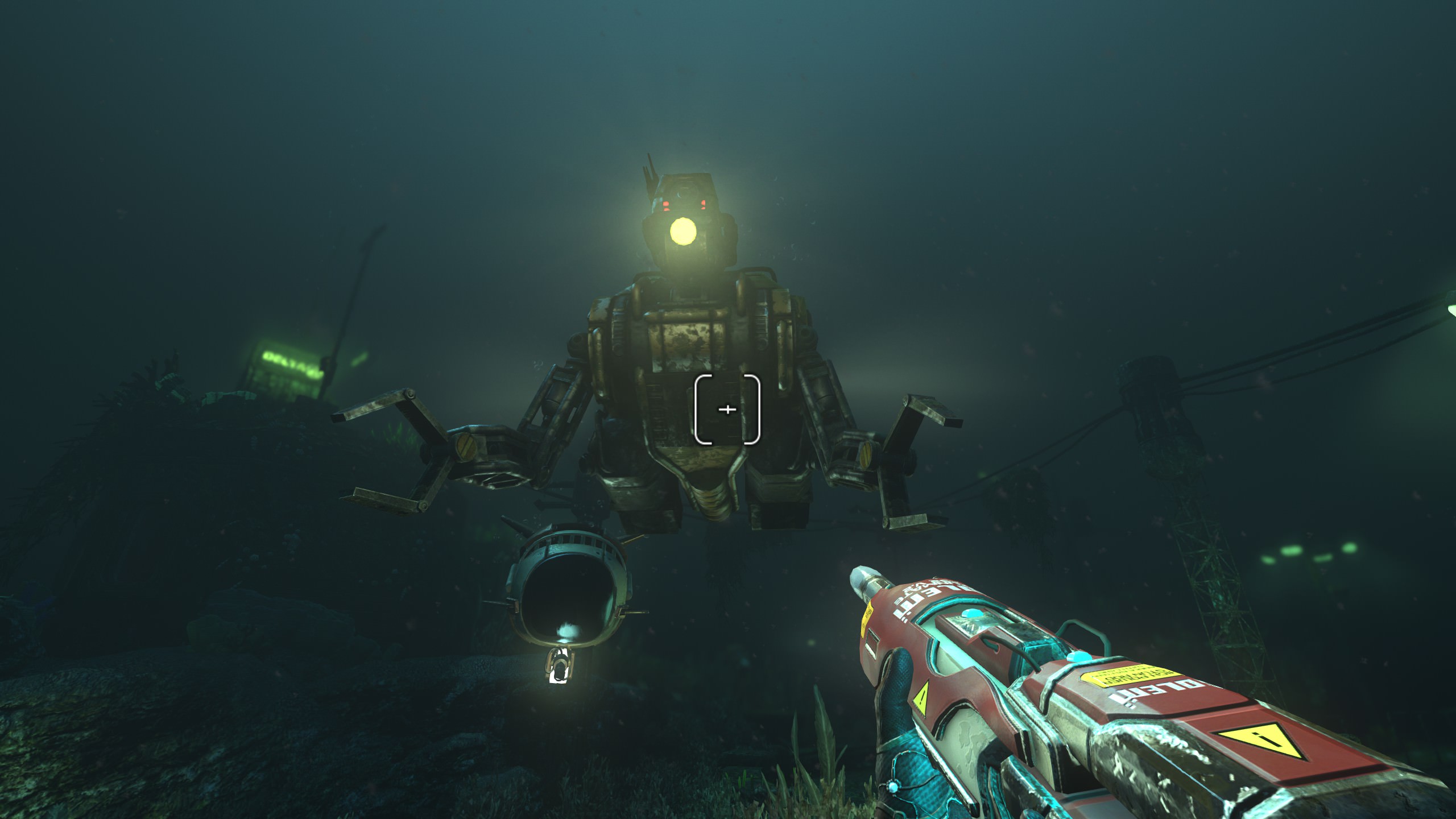
Early on, the player also has to “murder” one of these robots with a weapon. While the big robot in this screenshot, which most players will choose since the other one is more practical/useful even though not at all human, is a delirious, incoherent robot, both show pain and fear when attacking them as they do not die in one hit. You must hunt it down and strike it multiple times before it dies. This is not as powerful as the aforementioned Brandon simulation, this is just another example of SOMA putting terrible responsibility on the player for storytelling effectiveness, in a way that makes sense and isn’t forced. This technique is used throughout the game.
A book cannot make you feel responsibility for your actions, and then dread for giving you only horrible choices that make sense in the circumstance. A movie and TV show also cannot do this. This is one storytelling technique exclusive to games, out of many, and it is SOMA’s focus. Though its exposition and world building brought by optional exploration and world interaction is also of course unique to games. Due to how powerful SOMA is with these game-exclusive storytelling techniques, it is one of few games to cement itself as a serious story, worthy of being compared to other mediums. It is not just a game.
The drama between Simon and himself, and Simon and Catherine escalates as Simon takes out his anger and frustration on Catherine, but some steam is let out while the two descend into the Abyss (deeper ocean) to launch the Ark, while more memorable dialogue ensues.
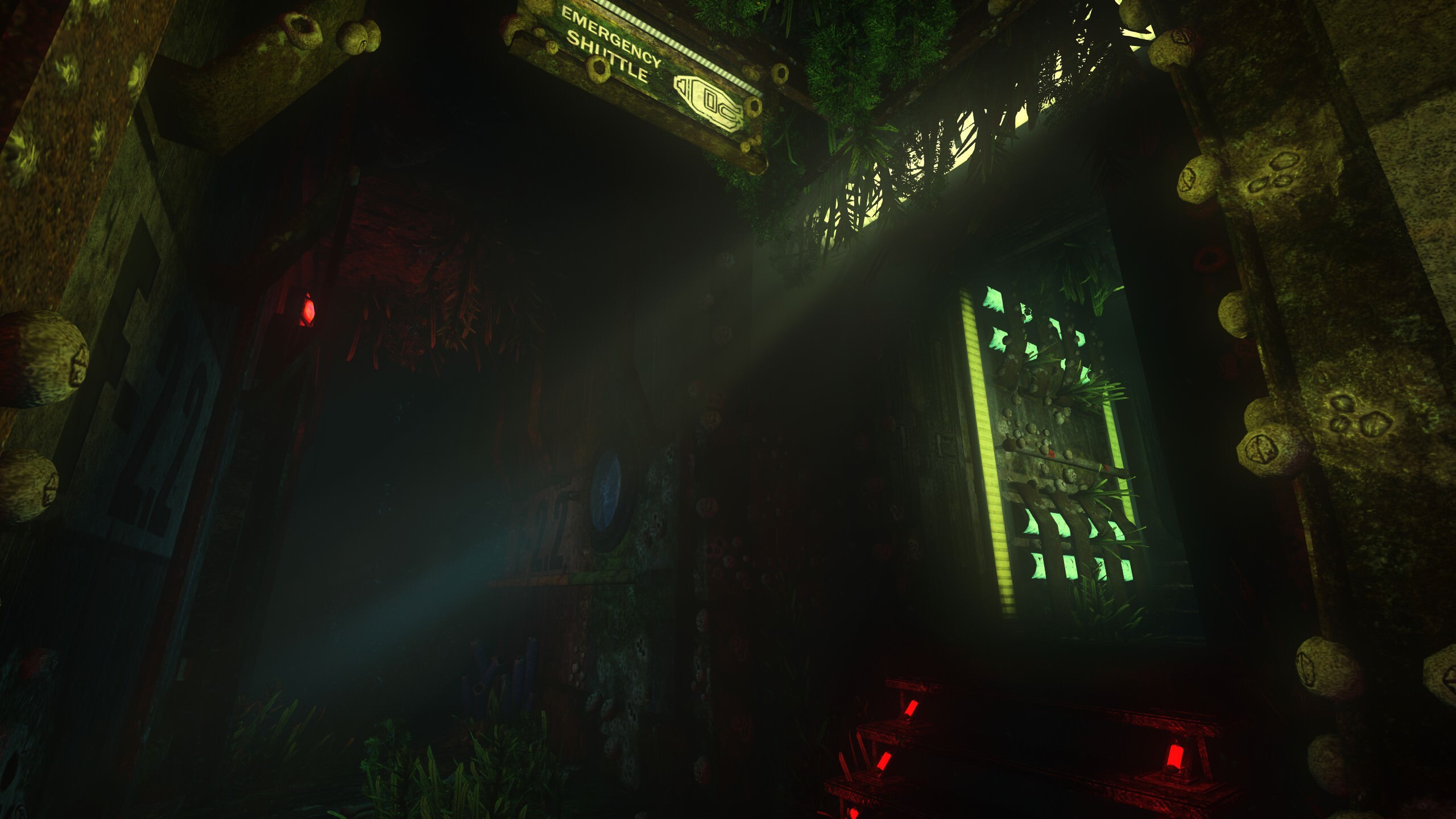
It is confirmed that the WAU was given full control over Pathos-II and then began to evolve, changing things and altering life, making the Mockingbirds. The WAU was created to preserve life, but to what end? At what cost? All of the mutated creatures serve to drive these questions home.
After reaching the Abyss, Simon eventually obtains the Ark. He also stumbles upon several other noteworthy things: the last living human on earth (who is barely alive, she gives you the Ark, asks you to unplug her life support and share her final moments together, but the player can opt to let her rot alone), and also site Alpha, which was thought to be only rumor. It was a secretive part of Pathos-II, and it is the heart of the WAU. Thankfully there is no silly boss fight with the WAU, but there is a choice: the player may obey a strange humanoid creature that has been discreetly (and finally directly) telling Simon to destroy the WAU by shoving his arm into its core, similar to how the player can heal themselves throughout the game. Or the player may simply leave.
I initially predicted that the creature telling Simon to destroy the WAU actually was the WAU, attempting to manipulate Simon, but it isn’t. At this climax in the game (one of several), the player can seemingly kill the WAU. The creature is Pathos-II employee Johan Ross (probably a reference to Johann Weyer who is both a real person and character in Amnesia: The Dark Descent). Ross was one of the members tasked with studying the WAU. Voice recordings found earlier in the game depict that he was strongly against the creation of the WAU.
Ross as he appears in the game was clearly was created or modified by the WAU. Every being that was created by the WAU (not counting copies) is shown to be hostile and seemingly mad, but this one is different, it’s more sentient. There’s not much to this creature really. It’s interesting that, despite being revived by the WAU, he continues to act against it. Johan Ross could’ve been developed more, he seems a bit rushed unlike the rest of the game.
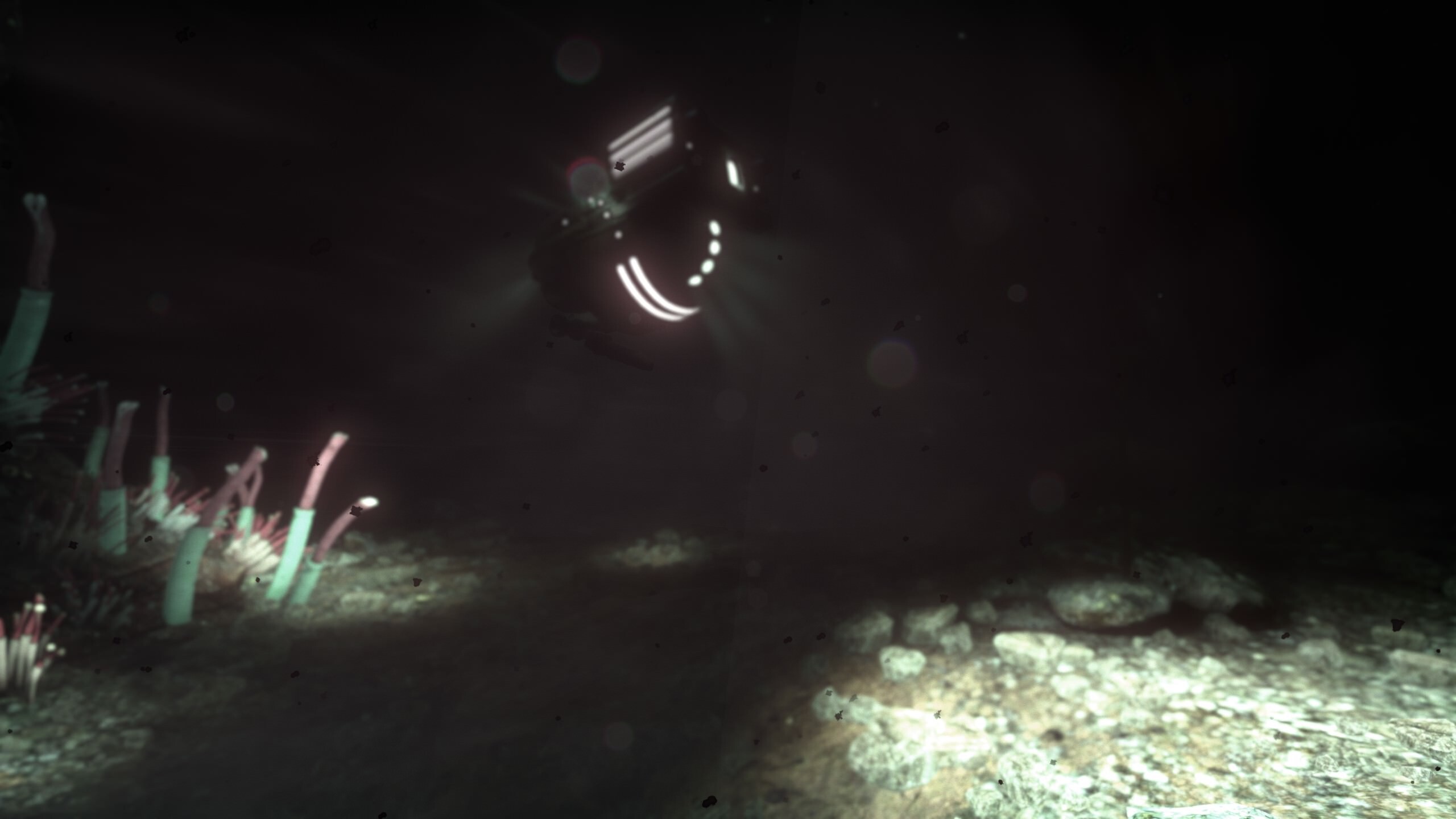
Eventually the time does come to launch the Ark. Catherine’s human body is found; she was seemingly killed by her colleagues who debated over keeping the Ark within Pathos-II, since launching it into outer space is risky. They claimed it was an accident, but it’s left for the player to decide. It’s clear from the scene however that she was hit over the head with a wrench; I’d say the hit was intentional, but the murder wasn’t.
Simon shows the same ignorance he showed in Omicron when he switched bodies. When launching the Ark, it is necessary to upload both Simon and Catherine to it, so that they can be a part of it as well. So, both need to be re-scanned, just like at Omicron and just like at the beginning of the game. It’s clear that it doesn’t work as a “brain transplant” but rather it’s a coin toss: a copy is made, and which one you wake up as seems to be random. When the time finally comes to launch the Ark at the end of the game, both Simon and Catherine fail the coin toss. They’re left in the abandoned Pathos-II. Simon once again takes out his anger on Catherine, like at Omicron, but then the facility is damaged and Simon is seemingly left alone in the dark. All alone… the last (arguably) sentient being on Earth. And then the credits roll.
But that’s not the end. There is a post-credits sequence, taking place from the point of view of Simon on the Ark. It really is a paradise. He awakens there with his memories, he may take the survey once again, finds Catherine, and then the game ends. What we have here are two endings; one horrible and miserable, one sort of happy. This really solidifies how the game is not one dimensional or clear cut. I find it to be a good way to end such a morally ambiguous game; an uneasy ending with mixed emotions.
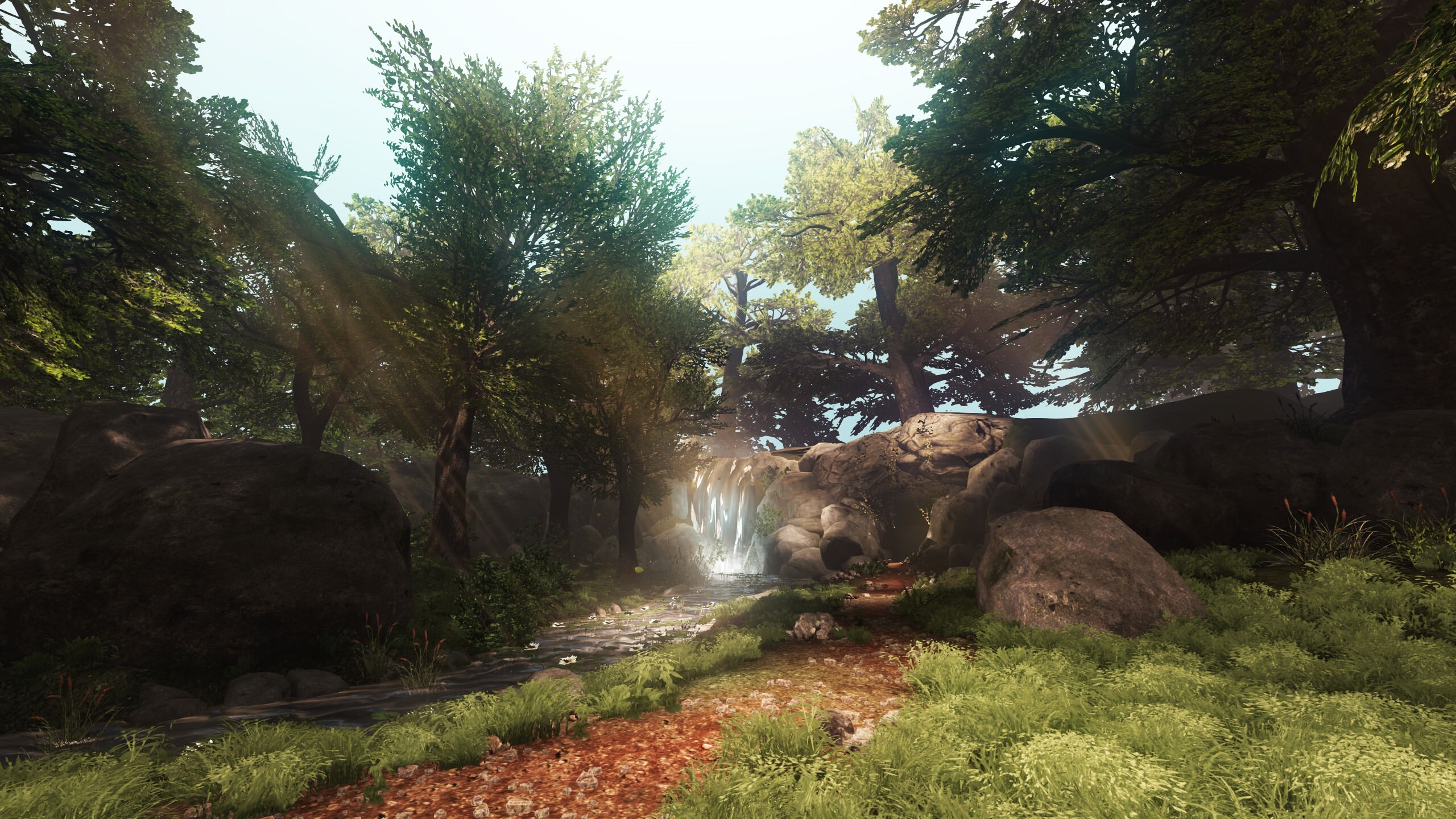
This is the type of writing that makes horror a worthy genre. This is what horror is supposed to be. Not just superficial jump scares and spookiness, but horror on a truly philosophical, existential, and psychological scale. It’s scary because of how human it is, because of the questions it makes the player ask, and because of the things it makes the player do.
As a side note, we have to point out that there are many Penumbra references to be found in this game. Frictional Games clearly made it a point to reference their smartest prior work. From similar soundtrack scores, to the same whispering sound effect that sometimes manifests around the presence of the humanoid creature that tells you to destroy the WAU, to some of the giant hostile underwater sea creatures reminding us of Penumbra’s giant worm, to the spiders…
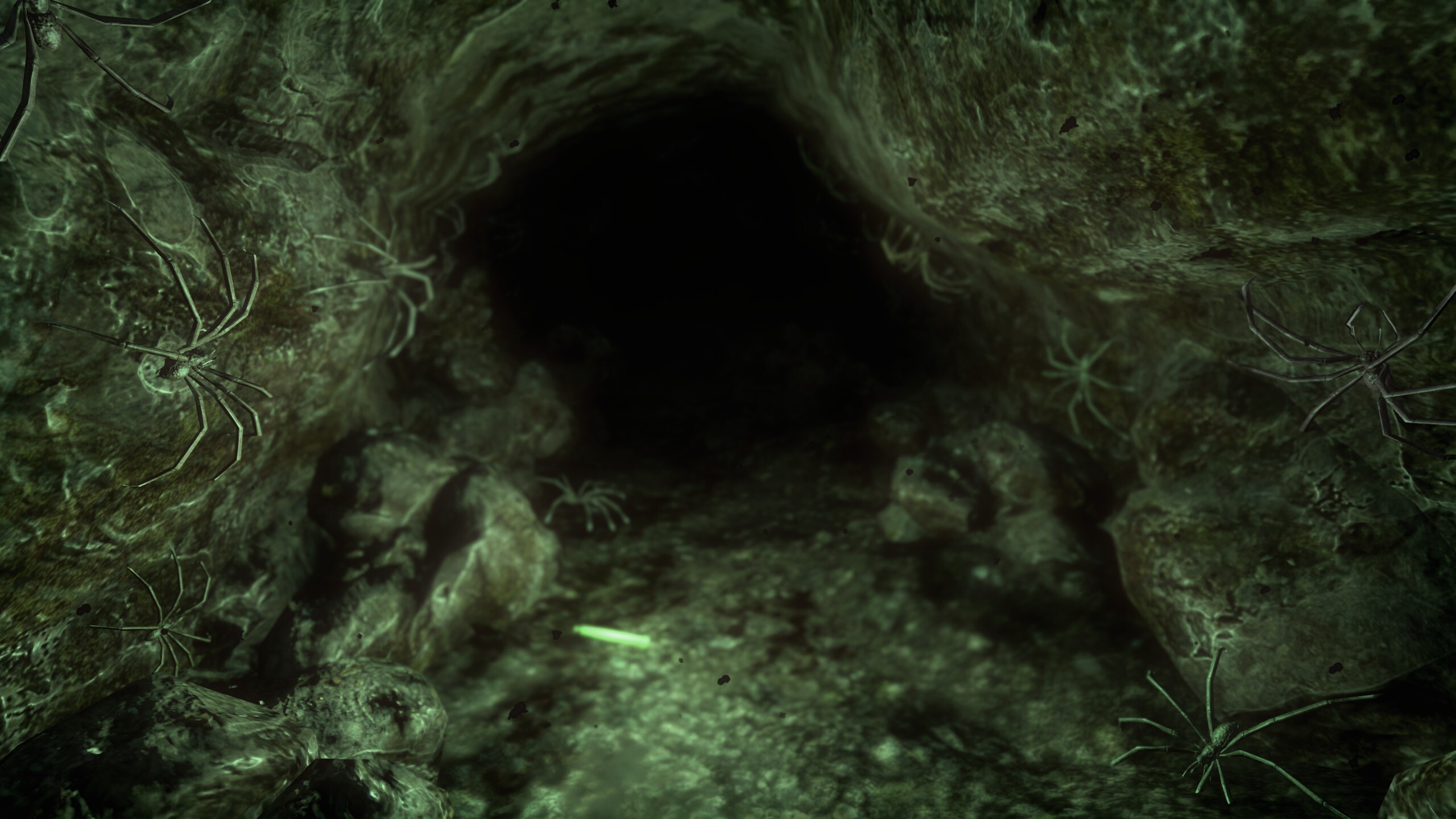
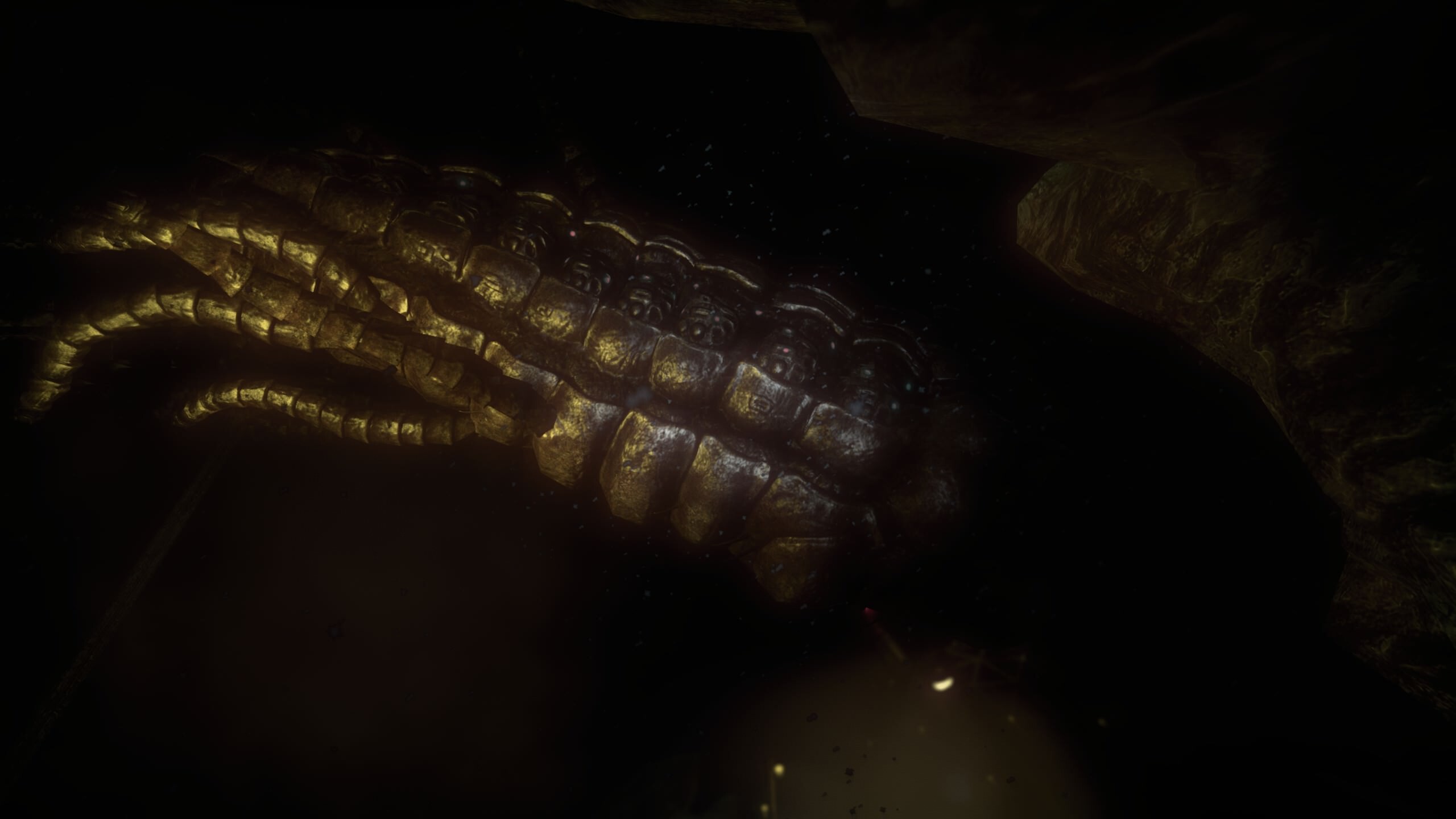
This is some kind of fish. You can actually find information about what species every animal found in the game belongs to, including this one.
Like many great stories, SOMA doesn’t try to answer the questions it raises. Instead it raises questions about humanity and consciousness, and through the events that transpire throughout the game it lets the player answer them. It does a wonderful job as a story driven video game, integrating the story into the gameplay better than most. Furthermore, it sticks to solid writing fundamentals fairly well as it is tightly crafted and doesn’t create gaping plot holes. Sure, you can point out that some aspects of the Ark aren’t entirely explained, but that’s nitpicking over a lack of excessive technobabble. SOMA serves as one of the best examples of a story-driven video game, and it does horror better than just about any game and also most movies thanks to its outstanding focus on psychological and existential horror.
The atmosphere is the best Frictional Games has ever created. No, it’s nothing like Bioshock. Yes, both games take place under water, but Bioshock resembles a 1940s or 1950s American city, while SOMA is a series of sci-fi facilities.
While their previous games, especially Amnesia: The Dark Descent, succeed in being very scary and making the player jumpy and nervous, SOMA excels in its much more detailed world, and in psychological as well as existential horror opposed to pure survival horror. Penumbra succeeds at Lovecraftian existential horror and to a lesser extent survival horror. Amnesia: The Dark Descent succeeds primarily at survival horror.
We called Penumbra and Amnesia: The Dark Descent the best horror games ever made, but SOMA greatly surpasses them in every respect. From superficial gameplay-based horror, SOMA is clearly superior due to its much more frightening monsters, enemy variety, more unpredictable AI, and even better execution. From a psychological horror standpoint, there isn’t another video game like it and it ranks at the top.
Gameplay
Building off what we said on the previous page, we will point out the fact that most players concern themselves with the survival horror aspect, where Amnesia: A Machine for Pigs (which I remind you was developed by a different studio entirely) disappoints. SOMA appears less focused on survival horror than Penumbra and Amnesia: The Dark Descent, but make no mistake about it, in SOMA there is no combat, only survival.
There is no limited light source—instead an unlimited flashlight obtained surprisingly late in the game, albeit it is before the half way mark. The inventory system is mostly gone, and there is less danger particularly early on. Thankfully, most enemies don’t seem to disappear like they do in Amnesia, and they have even better hearing. Their effective vision is more like the enemies in Penumbra: Black Plague (so greater than Amnesia), since several of the enemies in SOMA (the strange machine constructs) shine a light source in their field of view. Hostile creatures in SOMA also move faster than the enemies in Penumbra and Amnesia, and exhibit more unpredictable movement. Yes, they still follow a set path, but their movement is not uniform. Many will randomly burst into a sprint even when you’re undetected which can be rather frightening.
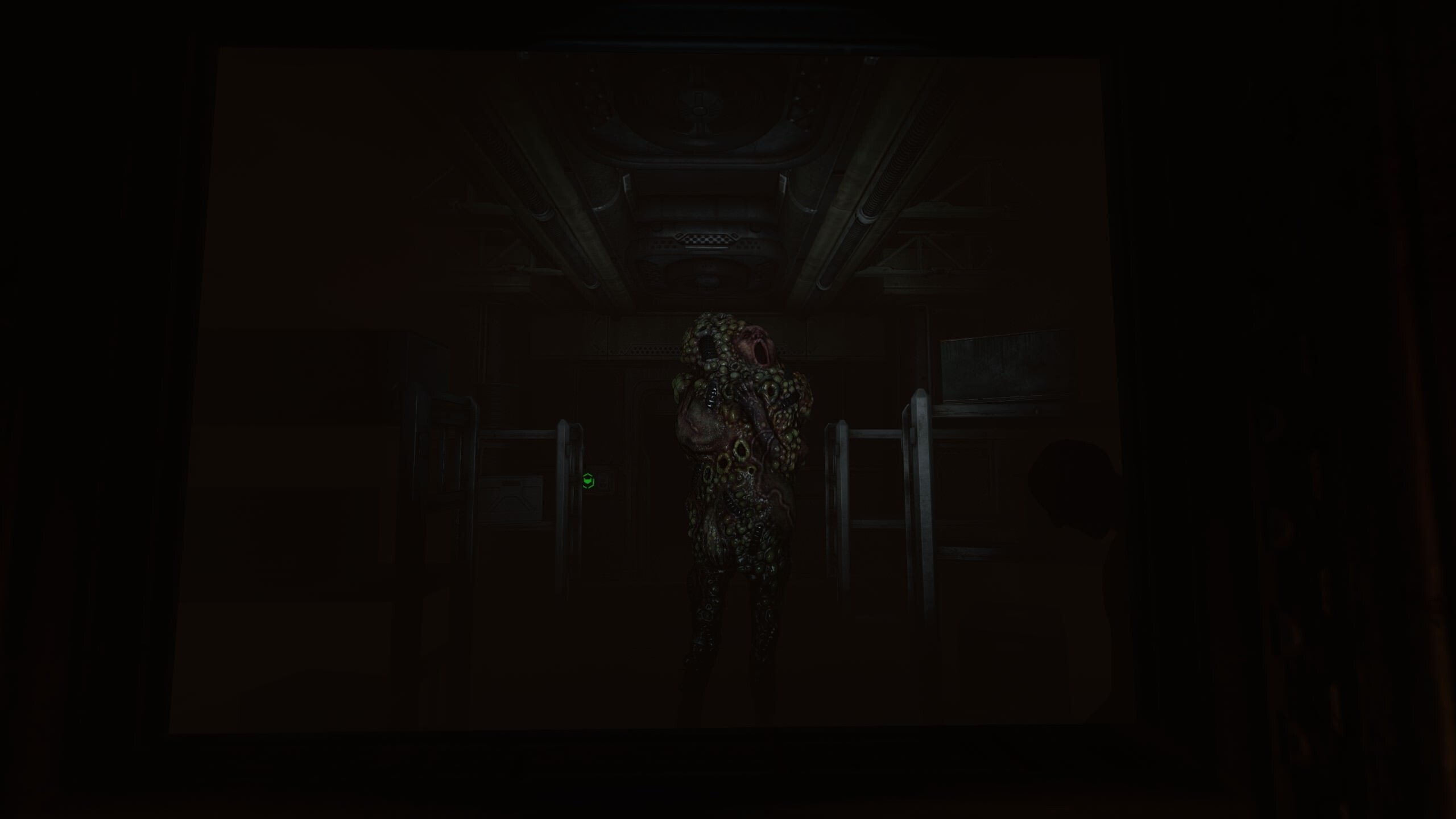
The aforementioned teleporting enemy is even harder to escape and predict. It can be heart stopping for some when, if this special enemy sees you, you turn around and flee in the other direction, only for it to teleport in front of you again around a corner. This happened to me.
Unlike Penumbra and Amnesia: The Dark Descent, the protagonist is not afraid of the dark. There is no sanity system so the player may hide in the dark for as long as they like, and the player may look at most enemy creatures for as long as they like, both with no penalty. However, the aforementioned special enemy which features the retry system imposes penalties for making eye contact. Your screen and sound will get very distorted and it starts to detect you.
A healing system is still present, which works by sticking your arm into fleshy pods found around the game world. There is no longer an HUD element to check your health (granted it was in the inventory screen in Penumbra and Amnesia: The Dark Descent, not quite the HUD). Lower health results in distorted vision and slower movement.
Note that damage lingers. There’s generally no auto healing, although some scripted events may be an exception. It’s possible to sustain damage to your legs, particularly from falls, resulting in a limp that stays until you heal yourself. In Amnesia and Penumbra, the player healed albeit it was a rather slow process, and Amnesia had healing potions as well.
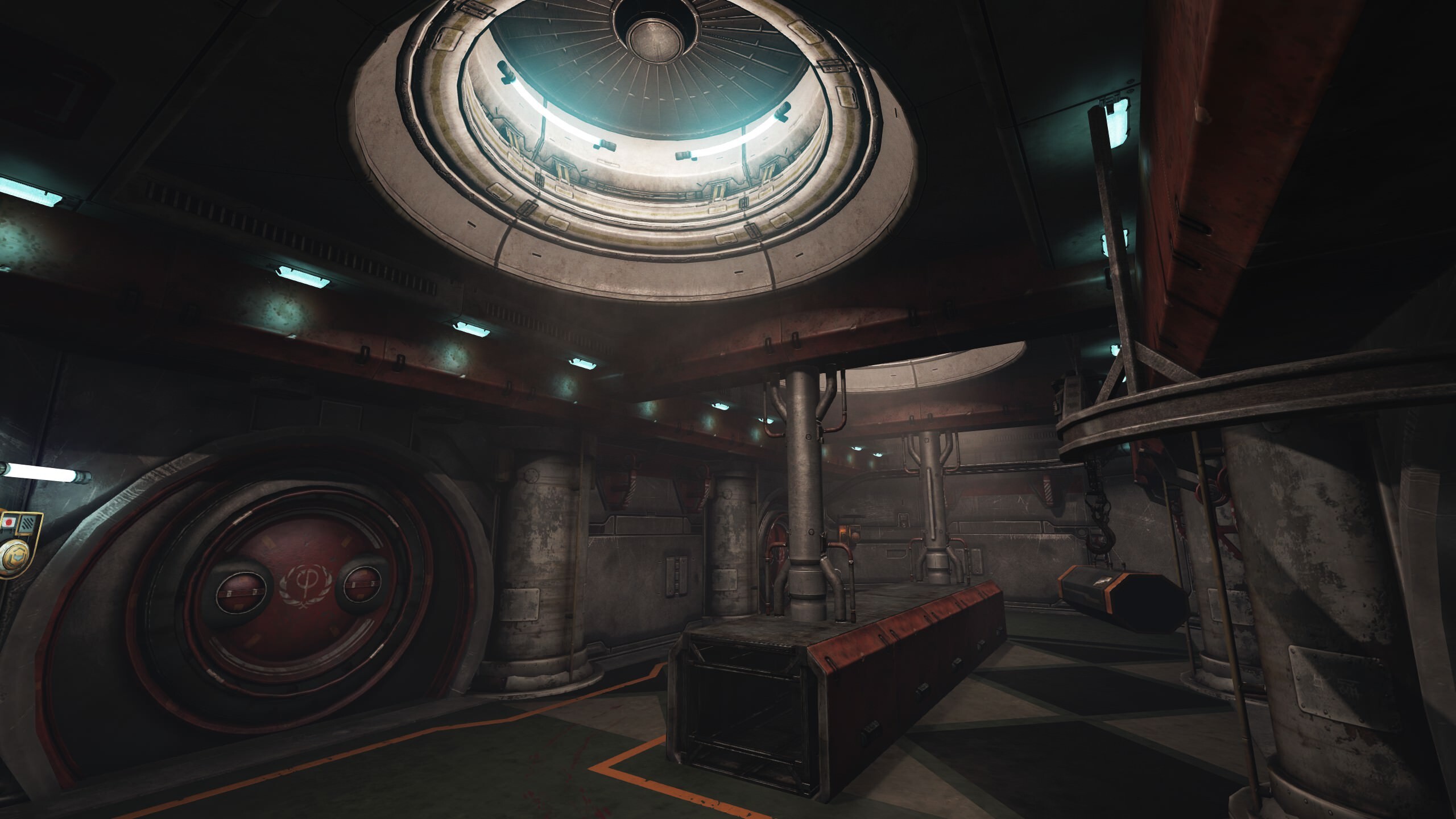
As with Amnesia and Penumbra, the default movement is a walk rather than a run. There is a run function, and while Simon gets audibly tired very quickly you can run for a rather long duration.
Also like Penumbra/Amnesia, SOMA has an abundance of object interaction. Much more in fact. The same basic kind of object interaction is present; you can pick up almost any object with the mouse, rotate it, and throw it (although the throw is very weak). But on a bigger scale you will interact with all kinds of different machinery throughout the game, to keep this interaction from being repetitive. SOMA uses this instead of the “puzzles” seen in their previous games. One section in Amnesia: The Dark Descent tasks the player with repairing an elevator system, and it’s done in a very practical puzzle-type way. SOMA never has anything as complex.
One thing that does pop up more than once is the use of the omni-tool (sound familiar?) It is, as the name implies, a universal smart device used to interact with different kinds of computers, sometimes allowing you to bypass doors or control certain parts of certain facilities. Its usage varies throughout the game.
This is all there is to say about the gameplay mechanics really. It’s all very simple, much like Penumbra and Amnesia: The Dark Descent but less repetitive since object/world interaction is always unique. There’s always the potential issue of this game, even more so than other Frictional Games titles, having too little gameplay. SOMA is not a survival horror game whatsoever, make no mistake about it. Its lack of combat gameplay is necessary for its story to work, though survival gameplay could have been implemented as an option.
Audio & Visuals
| 64-bit | Yes |
|---|---|
| Linux Support | Yes |
| Graphics API | OpenGL 3.3 |
| Frame Rate | 60 FPS Limited |
| High Resolution Support | Yes |
| Ultrawide Support | Yes |
| High Refresh Rate Support | Yes |
| Borderless Windowed Support | Yes |
| VR | No |
| Display HDR | No (force with Special K) |
| Shader Compilation Stutter | No |
| Ray Tracing | No |
| Mesh Shader Virtual Geometry Pipeline | No |
| NVIDIA Micro-Meshes | No |
| Advanced Distance-Based Level Streaming System with No Loading Screens | No |
| Variable Rate Shading | No |
| Sampler Feedback Tiled Texture Streaming | No |
| Sampler Feedback Texture-Space Shading | No |
| DirectStorage/RTXIO | No |
| Multicore CPU Support | 4-8 cores |
| GPU Physics | No |
| Adjustable FOV | Yes |
| Anisotropic Filtering | 16x |
| Anti-Aliasing and Upscaling | FXAA |
| Sound API | FMOD |
| Sound | Up to 7 channels |
| Dolby Atmos | No |
| UI Scaling | Yes |
| “Analog” Keyboard Support | No |
| Debug Console | Yes |
| Modding | Yes (SDK) |
SOMA uses the latest engine from Frictional Games, called HPL3. It remains OpenGL based and features more advanced graphics technology such as tessellation and the infamous chromatic aberration, which can thankfully be disabled by setting “Color Separation” under Game options to OFF. In any case, the engine remains outdated, most notably with its 60 FPS limit.
It’s a dark game, both in its story themes and its graphics. On this page we focus on the latter. Because of its dark atmosphere, it really begs to be played on something other than TN and IPS panels. This game pretty much needs OLED. Comparatively, because of the environments and lighting present throughout the game, it will look washed out on TN and IPS screens, and the lackluster black levels of TN and IPS screens is so obvious in such a dark game. IPS glow will further ruin this game’s image quality if using such a display.
Thus, SOMA is one of the most, if not the most, display demanding games out there. Dark enough to be affected by lots of black crush on VA, too dark for TN and IPS to display properly.
One thing is certain though; IPS is the worst technology for this game. When I originally played on an Acer Predator XB270HU (2560 x 1440 144 Hz IPS), visual immersion was ruined. You can’t help but notice how your blacks are glowing white. Not only are IPS and TN blacks not good enough (what should be black is just dark grey), the IPS glow is more evident than ever in this game.

The lighting system is clearly more modern than HPL2 engine, finally using modern soft lighting, but there’s nothing cutting edge here – no global illumination, no reflection technology (thankfully no cubemaps which do more harm than good). Overall the game does look good, except for outdoors.
SOMA’s dated background visuals and outdoor graphics aren’t seen very often at all, but they do showcase the limitations of this small scale indie engine. It’s meant for indoor visuals and now under water visuals, but it does very good with both. The under water areas look brilliant, although some very small under water objects appear very low polygon (hexagonal).

Showing off that Bokeh depth of field. Like many other modern games, SOMA’s depth of field looks very realistic.
The one major problem with SOMA’s graphics is aliasing. It only supports FXAA which is not a sufficient form of AA (and neither is any other form of MLAA). I have been unable to force supersampling; the S.T.A.L.K.E.R. Clear Sky AA bit in NVIDIA Inspector does not work for SOMA. I was hoping for built in temporal AA, the standard as of 2015. NVIDIA DSR does not work in this game; you can select your DSR resolutions but they all break the game and are thus unplayable. The aliasing is mostly gone at 3840 x 2160, but it is very noticeable at 2560 x 1440, I can hardly imagine how aliased it looks at 1920 x 1080.
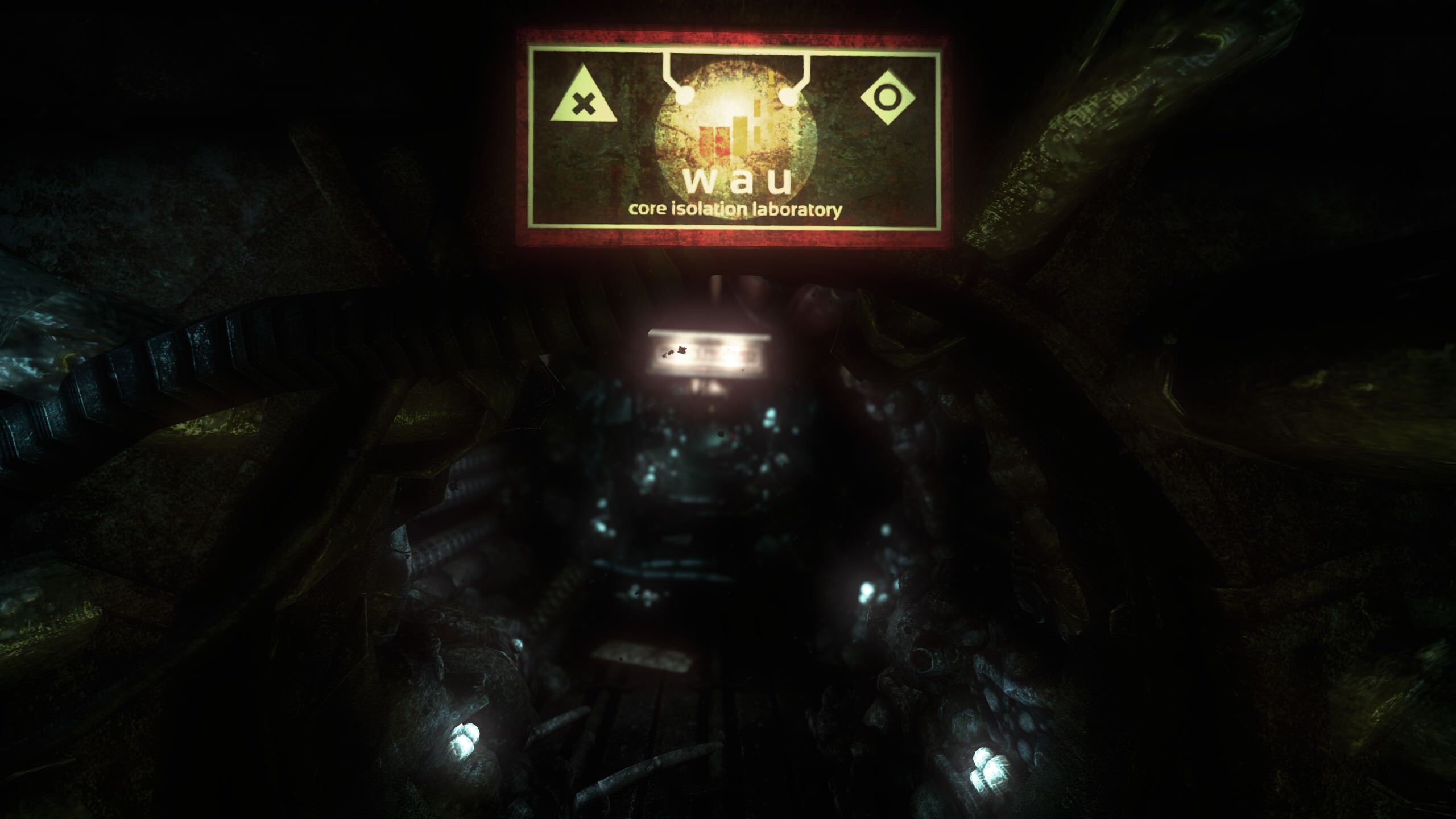
As with Amnesia: A Machine for Pigs, SOMA not only lets the player enable or disable V-Sync, they can also enable Adaptive V-Sync which can be useful if you don’t have a variable refresh rate monitor. It also features a selectable refresh rate option which goes through the ones supported by your monitor, but this is weird considering the game has a 60 FPS limitation which is insane in 2015. Note that SOMA suffers from a poor V-Sync implementation that stutters even with forced triple buffering, which one would expect works as this is an OpenGL game, but I notice no difference in practice.
The PC used to play the game at launch (i7 2600 with turbo, 8GB DDR3 1600, GTX 980) averaged between 75-120 FPS with G-SYNC enabled and the frame rate unlocked, but the game still only updates at 60 FPS so 120 FPS or any other frame rate is the same as 60 FPS in SOMA, just like Amnesia and Penumbra. Frictional really needs to get with the times [editor’s note from the future – they still have not as of 2023].

SOMA makes a statement for the importance of sound engineering. Although it sadly abandoned OpenAL as the sound API in favor of FMOD, it manages to impress. While this does mean that SOMA does not support the same 3D HRTF and OpenAL EFX as Penumbra/Amnesia, nothing seems to be lost on my surround sound system. This is the first time in history I’ve found a game have comparably good HRTF to OpenAL/DirectSound3D! In addition, SOMA has the best sound effects (mixing and perhaps recording quality) I have found in any game, surpassing Amnesia: A Machine for Pigs and Cryostasis: Sleep of Reason and even DICE games.
In some ways, SOMA’s surround sound is impressive. There are always ambient sound effects going on, and not just stemming from nowhere either. Computer equipment beeping, construction gel dripping, and more, all of which can be found and pinpointed throughout the environment and all of them being strongly present to make for an enveloping sound environment especially with a multichannel surround setup.
But there is a major flaw in SOMA’s surround sound support—voices do not come from the center channel. This is a pretty big downside that detracts from all instances of people speaking, and there is a ton of dialogue in the game. People only accustomed to headphones or stereo/2.1 speakers won’t realize this is a downside, but anyone accustomed to surround sound will. This is fairly common in games unfortunately.
Nevertheless, the sound effects are mind blowing. Frictional Games was forthcoming about SOMA’s sound design as you can see here:
They made sure to use real sound effects for many things. This suggests that SOMA will benefit more from high end audio gear than other games. What’s most impressive is that every single object and every single surface generates a realistic sound, and each and every one has realistic echoes/reverb. For example, I tried dropping what looked like a pencil, then a thin marker, then a thick marker, all on the same desk, and each object made a different sound. Then I threw them on the ground and again they all made different, appropriate sounds.
This attention to detail in sound quality is far from trivial. When trying to survive a hostile encounter, every object you accidentally kick makes an audible noise with realistic echoes and reverb. Combined with the fact that enemies have better hearing and smarter AI than most other horror games, every object you accidentally kick or move will make you cringe in fear. This game makes the player feel so uneasy.
SOMA has excellent environmental audio, but lacks in occlusion. You can take objects such as plates, tin cans, water bottles, gasoline containers, cardboard boxes, literally every object imaginable, and throw them around a room and each and every object has a unique, completely realistic sound. Amazing. In surround sound, SOMA demonstrates some of the best surround spatialization. Not the very best; Penumbra and Amnesia with OpenAL Soft edge it out in spatialization, but SOMA isn’t too far behind.
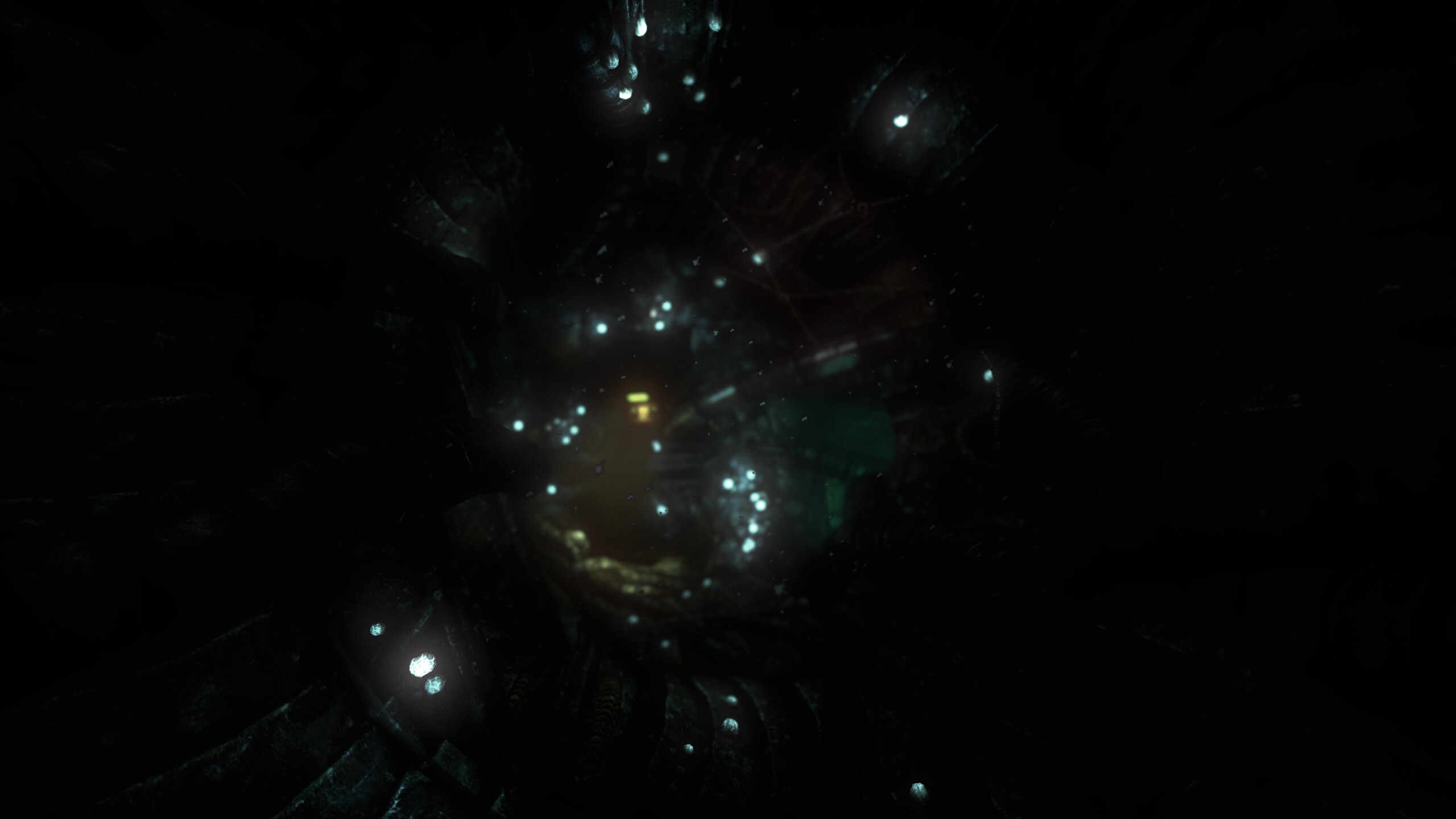
The levels never sound static since you will always hear something, whether it’s objects crashing to the ground or footsteps. When walking past the fleshy organic material that’s found everywhere, you may hear faint voices and whispers which are impossible to make out during gameplay. Also, enemies don’t just make the same few sounds like they do in every other horror game. They make horrifying sounds that sometimes sound like cries for help, and the sounds are very unpredictable. They send chills down your spine. Overall phenomenal sound design showing the higher budget of SOMA compared to its predecessors.
We mentioned earlier that SOMA features a voiced protagonist, and that it has far more character interaction. There is lots of voice acting and most of it is of high quality. The protagonist’s voice actor may overact at times but it’s nothing terribly troubling. The soundtrack of the game is truly minimal; there are large stretches during which no music plays, but it suits the game well. Some of the tracks are very similar to Penumbra, and others to Blade Runner which also questions what defines humanity. Actually, some of the tracks sound like a beautiful blend of both Penumbra and Blade Runner.
Time to wrap up this lengthy review.
Conclusion
I had high expectations for SOMA which is very rare, and despite that it managed to exceed expectations (a first?), besting their previous games in just about every single way. SOMA boasts some of the most impressive art design you’ll find in any game, featuring far more detailed locations than any of their previous games. It benefits from higher budget production leading to more character interaction and overall polish, which says a lot given the quality and attention to detail of their previous games.
It shows the signature style of Frictional Games by placing onerous, terrible responsibilities on the player, playing off of guilt and conscience like no other. It is perhaps the most terrifying horror game ever made, but not just on a superficial level; it’s scary for how human it is. It tells one of the most powerful, memorable stories of any horror game, any video game and any horror story from any medium in fact, elevated by the game being interactive.
The game does have gameplay in the form of stealth encounters that vary with each enemy type (and nearly every enemy encounter having a completely unique enemy, AI and all) and every “puzzle” is different (not truly puzzles, mind you). But it is not a survival horror game at all.
SOMA is one of the darkest, most powerful video game stories, darker and more powerful than nearly everything accomplished by cinema as well. Not a game for the faint of heart; it is a game for the thinker, but thinking about this story can be too depressing. It is a triumph, it’s more than I ever could have asked for from a horror game. Quite frankly it’s hard to imagine this genre (that is – horror with simple, non-combative gameplay) getting any better than this. SOMA manages to raise the bar for horror as a literary genre.
Strengths
- Writing quality and narrative design, some of the best “gameplay assisted storytelling” ever
- Art design, level design, and related attention to detail is exquisite, far beyond their past games thanks to a higher budget actually being put to good use
- Incredibly atmospheric, tense atmosphere so you have layers of different types of horror throughout (psychological, existential, survival)
- Almost every enemy encounter is with a unique enemy (different model, AI, sounds, player detection methods, gameplay). This makes me want to see Frictional create a survival horror game one day with this level of detail.
- You never do the same “puzzle” twice (not really puzzles, just practical problem solving)
- Extremely physics enabled world
- Incredible sound quality, some of the best and most detailed in gaming history
- Tons of dynamic lights and shadows
- Extremely moddable with documentation, the engine is designed well for modding
- Pretty good optimization
- Good voice acting
Weaknesses
- Have to edit a script file to disable crosshair, even though a game like this really doesn’t need one
- 60 FPS cap in 2015 is unacceptable
- While not a “walking simulator,” it still lacks gameplay mechanics. Combat wouldn’t work with this game’s story, though survival gameplay could work.





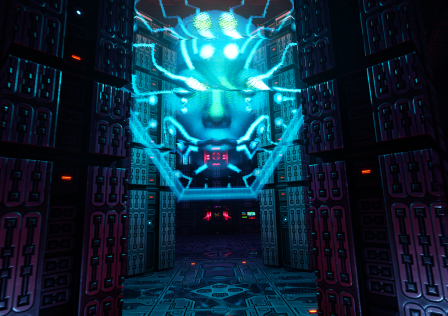
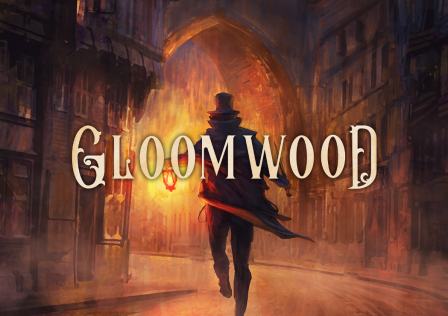

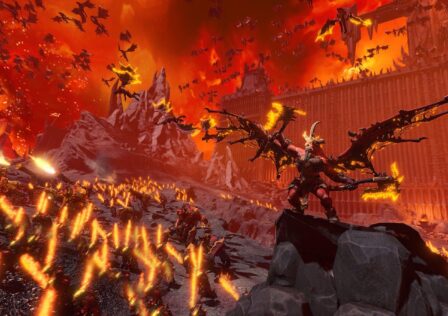
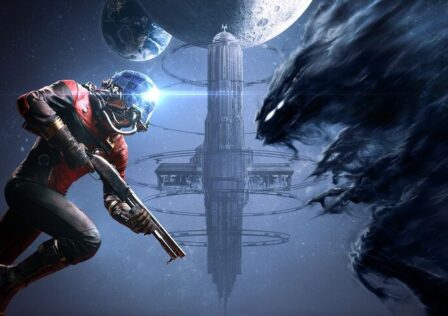
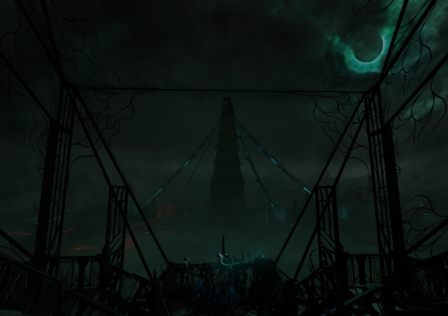
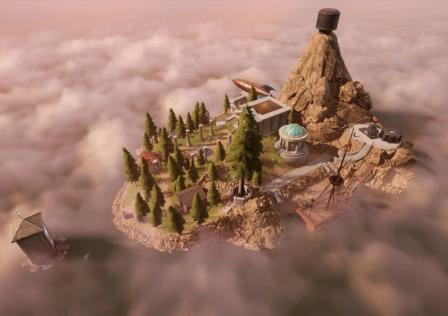
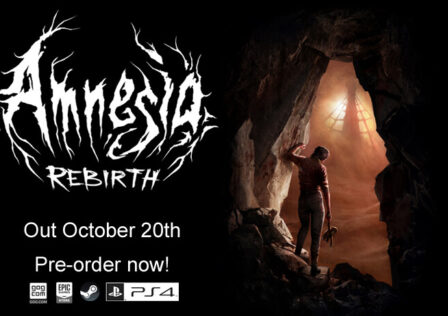

I don’t think I’ve played a game that has left me thinking about it for so long after beating it. It really things about humanity and how we view consciousness.
[…] attention to detail put into every aspect of SOMA is something to behold. It amazes me every time I think of it. To play it and experience it is more […]
[…] sound effects of all time, and that game is SOMA. We made note of its incredible sound effects in our review. Practically every object and every surface make a unique sound. Dropping a marker on a wooden desk […]
[…] made by Frictional Games (Penumbra: Overture, Penumbra: Black Plague, Amnesia: The Dark Descent, SOMA), and such a thing can have tremendous impact in a story that isn’t black and […]
[…] this particular headset. As a test I played two games both featuring a wide range of sounds: SOMA and Destiny 2 […]
[…] Gamers will definitely be the primary target user for the headset so it would not do us justice to dedicate a section of the review to gaming. In general, gaming is an excellent test because it offers a wide range of sounds. Voice actors, foot steps, explosions, ambience, and millions of other background noises add to the environmental feel of the game and the quality of the audio gear can absolutely effect the immersion experience with the game. For this review, I played three games which were all very different from one another. Battlefield 1, The Witcher 3, and… Read more »
[…] I’ve reviewed in the past, I played two games both featuring a wide range of sounds: SOMA and Destiny 2 […]
[…] plot which slowly reveals itself as you progress through the game. Be sure to check out our review of the game, not that you’ll need any convincing with a price of […]
Here is a wonderful review from one of the authors cited as an inspiration for this game: Peter Watts, also a marine-mammal biologist.
https://www.rifters.com/crawl/?p=6953
Seems like we are mostly on the same page but of course he is able to provide much deeper insight into the writing behind SOMA. I love how harsh he is about gaming.